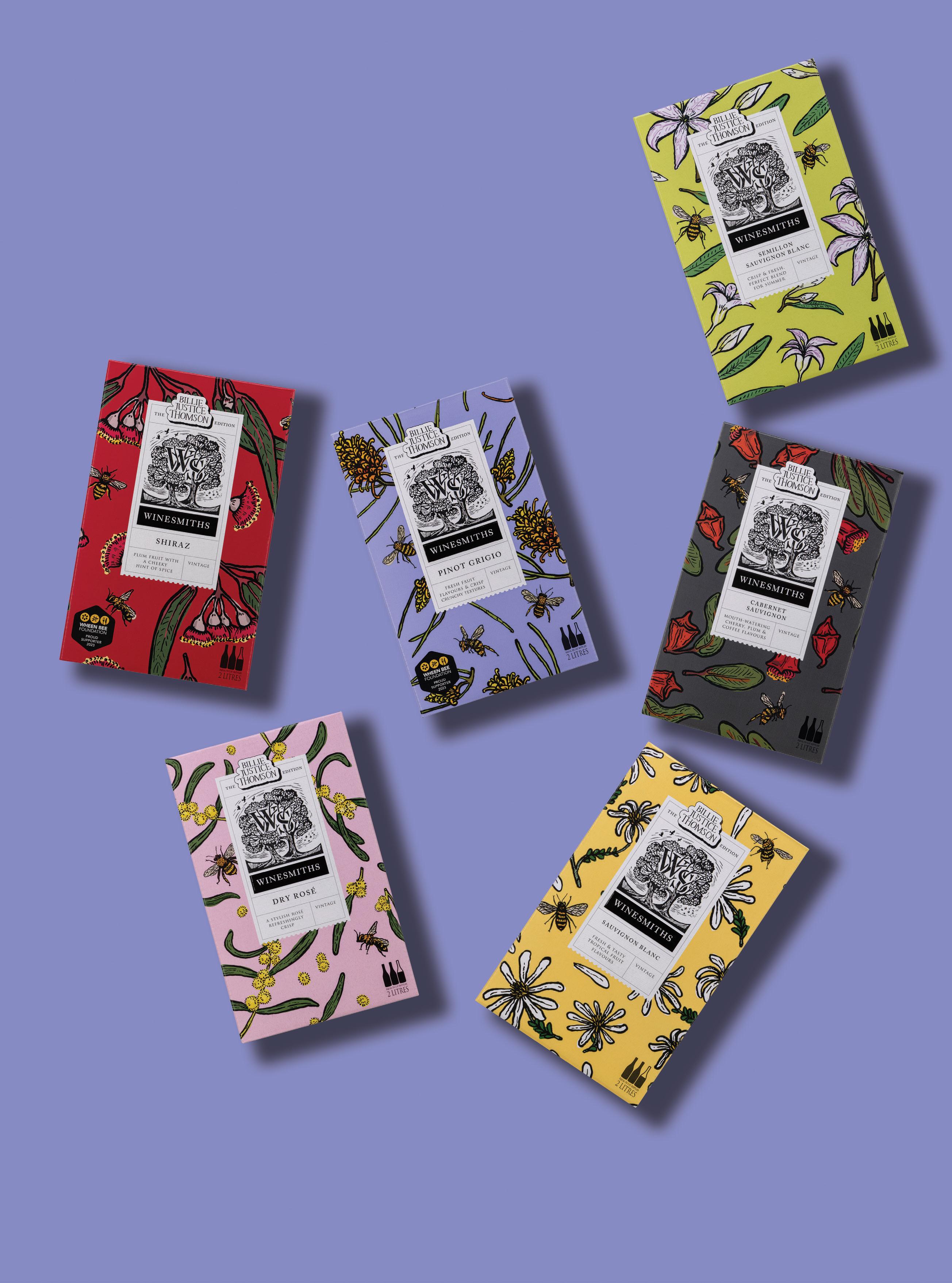












Welcome to the July issue of National Liquor News, another issue that’s packed with business advice and product information, reflecting the very dynamic nature of the current drinks retail market.
In many ways, we’re experiencing a golden age in terms of liquor here in Australia. New product development is occurring on an unprecedented scale, both globally and with a new wave of local producers. It’s unlocking new categories and revolutionising more traditional ones.
Consumers have never had it so good. No matter what your preferences, budget or occasion, there’s something to drink for everyone.

But that abundance of choice brings with it new challenges for retailers. They have their own choices to make – about what to stock and how to sell it. For decades, National Liquor News has been helping retailers overcome their challenges and in today’s climate we have a more important role than ever: identifying the trends that will make a real commercial difference, providing the latest advice on product ranging and highlighting the best ways to market and promote your store and the products within it.
This month, for example, we take a deep dive into the US whiskey category, an important sector for Australian retailers given that Australia has the highest per capita consumption of American whiskey in the world.
The Intermedia Group takes its Corporate and Social Responsibilities (CSR) seriously and is committed to reducing its impact on the environment.
We continuously strive to improve our environmental performance and to initiate additional CSR based
Traditionally, this category has been dominated by (1) Jack Daniel’s and (2) Kentucky bourbon, but the fact is US whiskey is enjoying a rich period of innovation and increasing diversity in terms of style and provenance. If you want to know what you should be stocking, both for the more and the less adventurous consumer, we have you covered.
Elsewhere, we explore the fast-evolving premium mixers sector, get our fingers sticky with liqueurs and taste some terrific red blends in our wine tasting.
If you’ve looked at the picture above this column, you’ll have noticed that Brydie Allen isn’t writing this piece as she normally would. Brydie has left to pursue other opportunities and I’d like to take a moment to thank her for the great contribution she’s made to NLN over the last few years.
While we’re sad to say farewell to Brydie, I’m pleased to announce that our previous editor Deb Jackson is returning to pick up the NLN reins once more. Many of you will know Deb; she’s an experienced journalist and knows this sector well. We’re thrilled to be working with her again.
In fact, by the time you read this, Deb will already be in the hot seat. I hope you’ll join me in welcoming her back.
Have a great July!
Paul Wootton Publisherprojects and activities.
As part of our company policy we ensure that the products and services used in the manufacture of this magazine are sourced from environmentally responsible suppliers.
This magazine has been printed on paper produced
from sustainably sourced wood and pulp fibre and is accredited under PEFC chain of custody.
certified wood and paper products come from environmentally appropriate, socially beneficial and economically viable management of forests.
Get the facts DrinkWise.org.au
PUBLISHED BY:
Food and Beverage Media Pty Ltd
A division of The Intermedia Group 41 Bridge Road GLEBE NSW Australia 2037 Tel: 02 9660 2113 Fax: 02 9660 4419
Publisher: Paul Wootton pwootton@intermedia.com.au
Managing Editor: Deb Jackson djackson@intermedia.com.au
Journalist: Caoimhe Hanrahan-Lawrence chanrahanlawrence@intermedia.com.au

General Manager Sales –Liquor & Hospitality Group: Shane T. Williams stwilliams@intermedia.com.au
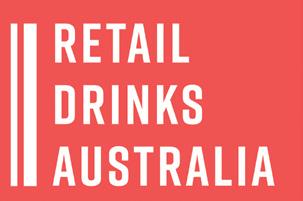
Group Art Director –Liquor and Hospitality: Kea Thorburn kthorburn@intermedia.com.au
Prepress: Tony Willson tony@intermedia.com.au
Production Manager: Jacqui Cooper jacqui@intermedia.com.au
Subscription Rates
1yr (11 issues) for $70.00 (inc GST)
2yrs (22 issues)for $112.00 (inc GST)
– Saving 20% 3yrs (33 issues) for $147.00 (inc GST)
– Saving 30%
To subscribe and to view other overseas rates visit www.intermedia.com.au or Call: 1800 651 422 (Mon – Fri 8:30-5pm AEST) Email: subscriptions@intermedia.com.au
Disclaimer
This publication is published by Food and Beverage Media Pty Ltd (the “Publisher”). Materials in this publication have been created by a variety of different entities and, to the extent permitted by law, the Publisher accepts no liability for materials created by others. All materials should be considered protected by Australian and international intellectual property laws. Unless you are authorised by law or the copyright owner to do so, you may not copy any of the materials. The mention of a product or service, person or company in this publication does not indicate the Publisher’s endorsement. The views expressed in this publication do not necessarily represent the opinion of the Publisher, its agents, company officers or employees. Any use of the information contained in this publication is at the sole risk of the person using that information. The user should make independent enquiries as to the accuracy of the information before relying on that information. All express or implied terms, conditions, warranties, statements, assurances and representations in relation to the Publisher, its publications and its services are expressly excluded save for those conditions and warranties which must be implied under the laws of any State of Australia or the provisions of Division 2 of Part V of the Trade Practices Act 1974 and any statutory modification or re-enactment thereof. To the extent permitted by law, the Publisher will not be liable for any damages including special, exemplary, punitive or consequential damages (including but not limited to economic loss or loss of profit or revenue or loss of opportunity) or indirect loss or damage of any kind arising in contract, tort or otherwise, even if advised of the possibility of such loss of profits or damages. While we use our best endeavours to ensure accuracy of the materials we create, to the extent permitted by law, the Publisher excludes all liability for loss resulting from any inaccuracies or false or misleading statements that may appear in this publication.
Copyright © 2023 - Food and Beverage Media Pty Ltd
Crafted with the highest quality ingredients from around the world. Fever-Tree’s range of delicious mixers for dark spirits such as Whiskies, Bourbons and Rums, make the Ultimate Mixed Drink.


0%* alcohol. 100% flavour.
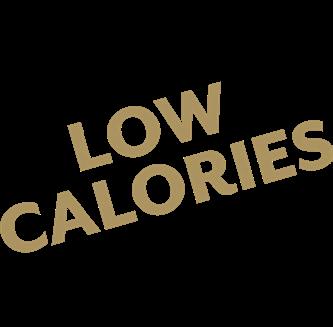

The Australian premium fortified wine category is an important one to McWilliam’s Wines, being a core part of the brand’s identity. Over half a century ago, McWilliam’s was at the forefront of the category, and now, thanks to investment in its new look master brand and fortified range, McWilliam’s is on track to reclaim this leadership.
McWilliam’s Hanwood Estate is an iconic purveyor of fortified wines. The range includes Tawny (available in Five, 10 ‘Grand’, 20 and 30 Year Old editions, with special gift packaging for the older expressions); Muscat Five and 20 Year Olds; Apera Five Year Old; and Topaque 20 Year Old.

Russell Cody, Senior Winemaker and Fortified Custodian at McWilliam’s Wines, explains the allure behind this range.
“Our selection of Aged Tawny is an exciting opportunity to experience this shift in style across multiple generations, with the Rare and Very Rare wines showing the big, full-flavoured Australian style while the Classic and Grand wines demonstrate a more modern, savoury style,” Cody said.
“These are magnificent, old winescrafted to last. They will be a fantastic gift for someone to savour and enjoy a glass of Australian wine history.”
Ahead of winter and with Father’s Day just around the corner, McWilliam’s is redoubling its marketing efforts to engage
consumers and retailers with the awardwinning Hanwood Estate offering.
Carrah Lymer, McWilliam’s Brand Manager at Calabria Family Wine Group, said: “McWilliam’s Hanwood Estate premium fortified range is especially enjoyable during the cooler months, there’s nothing like sitting by a fire and sipping on a McWilliam’s Tawny. The support of the McWilliam’s national advertising campaign will ensure fortified is front of mind this winter.”
The new campaign will hark back to the golden era of Australian advertising in the 1950s and 1960s, when McWilliam’s dominated the landscape with activations in print, TV and on iconic landmarks like Sydney’s Central train station. While it won’t exactly copy its past, McWilliam’s will reconnect with some of its old touch points, including via the platforms at Central, and also refresh the strategy with a national instore promotion from mid-July.
This new campaign will also build on the recent success of McWilliam’s Hanwood Estate since being rebranded last year, a change that has been embraced in the market by consumers and trade alike.
“The Hanwood Estate brand was fully refreshed, with a proprietary bottle featuring the McWilliam’s logo and rich, black, elegant design features,” Lymer explained.
“The wines (from Grand up) are housed in beautifully designed outer packaging -
which become more ornate as the wines increase in age,” she continues.
The season and upcoming gifting occasion mean the time is perfect to hero McWilliam’s Hanwood Estate in-store, especially given that it’s also a landmark year for the brand. 2023 marks 110 years since JJ McWilliam first planted vine cuttings in the Riverina, carting in 50,000 vines to establish the region as a producer of wine. For Hanwood Estate, this year is also the 50th anniversary of the opening of the vineyard’s famous ‘Big Barrel’ cellar door, with a newly renovated version due to reopen to the public later this year. ■
Pay rebates only on selected Core Ranged products?
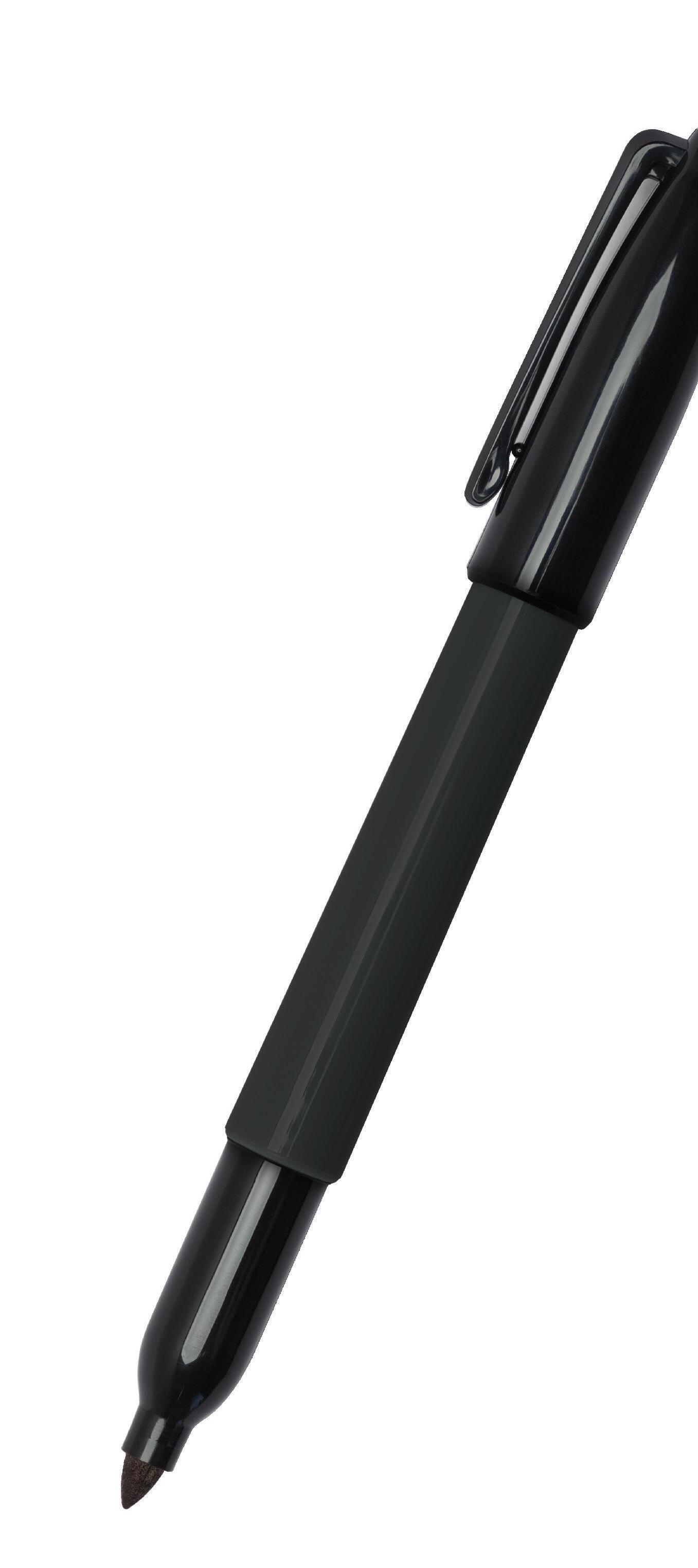
Force you to take product allocations?
Charge you a shrink wrap fee?
Have their call centre or accounts department located offshore?
Make you pay monthly fees?
Include discounts, point of sale and advertising spend in their rebate calculations?
Make you pay for promotional point of sale and signage?
Have agreed terms with all Suppliers?
Have full control of their logistics?
Restrict you from having greater flexibility to retail and market to your local community?
ILG is Australia’s largest member-owned Liquor Co-operative with over $50 million in assets
ILG means ownership in two and soon to be three distribution centres in NSW & QLD
ILG has six strong banner groups providing choice and flexibility to suit your business needs.
ILG has 1500 members/customers strong in three states.
ILG offers competitive rebates on all package liquor purchases with no exclusions.
ILG offers freight rebates of $1.10 per case inc gst
ILG has NO forced product allocations
ILG offers strong signage to improve street presence free of charge
ILG has a dedicated sales team and member services team to help with day to day needs.
ILG has NO shrink wrap fees
ILG offers a marketing and e-commerce platform free of charge including a complete fortnightly printed promotional kit

Two iconic family drinks businesses has welcomed a new generation into their companies in recent months.
Coopers has now welcomed the third member of its sixth generation, with Iain Cooper joining his cousin and sister at the company to become Technical Brewer. Cooper brings international experience to the role after spending the past three and a half years with Carlsberg in Copenhagen.

“Any family member keen to join the brewery is strongly encouraged to first earn their stripes outside the business. So, I headed overseas to do just that,” Cooper explained.
Cooper remembers the brewery being a key part of his life as long as he can remember, but wasn’t sure he would join the family business, initially pursuing a degree in media and economics. However he later turned to his passion for brewing, traveling to Edinburgh to work in local breweries and complete a Master of Science in brewing and distilling. He now looks forward to contributing to his family’s world-class brewery.
Meanwhile, Calabria Family Wines welcomed the first of its fourth generation, with Sophie Calabria joining the company’s marketing department. Sophie is the eldest grandchild of second generation custodians Lena and Bill Calabria, and is thrilled to be working alongside her dad and family to learn more about the wine industry.

Bill is especially proud of Sophie joining, and said: “As a family-owned business, we are proud to have been producing award-winning wines for over 75 years. We believe that our success is due to our commitment to quality, sustainability, and family values. With Sophie joining the marketing team, we are excited to continue this legacy and to pass on our passion to the next generation.”
Hairydog Group has announced the acquisition of Boozebud, noting the “unique opportunity” for both parties. The acquisition brings together Boozebud’s existing e-commerce infrastructure and Hairydog’s experienced and knowledgeable team to maximise the combined potential of the two brands.
“Through this acquisition, we’re not just expanding our business footprint, we’re strategically aligning the strengths of BoozeBud’s advanced e-commerce capabilities with Hairydog’s proven retail expertise” said Ryan Agar, Head of E-commerce for Hairydog Group.
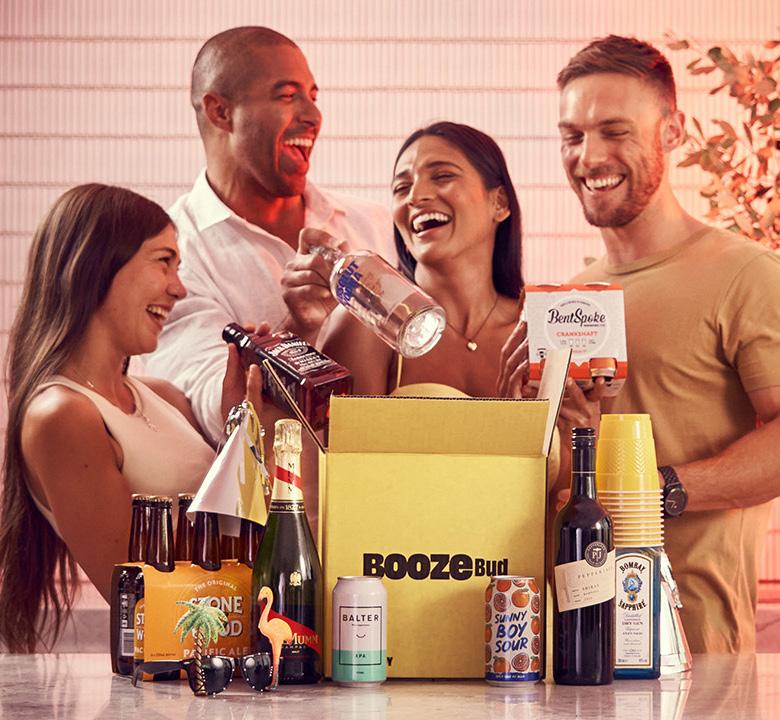
“This merger of two brands creates a powerhouse that is set to transform the online liquor retail space to provide better drinks and experiences to our customers.”
Hairydog said this latest acquisition will boost the group’s annual revenue beyond $75m threshold, driving incremental profitability and reinforcing its position as a dominant player in the online liquor retail industry.
Boozebud had previously announced it was going into voluntary administration, and ceased online orders. Now, the site has been relaunched, with Damien Smith, former Chief Technology Officer at BoozeBud, becoming part of the Hairydog team to help ensure a smooth transition.
“To celebrate the return of BoozeBud and its new beginning, we have lined up a series of compelling promotions that we believe will thrill our customers and provide them with an unmatched shopping experience,” added Agar.
For suppliers interested in learning more about the acquisition or the relaunch, please get in touch with your Hairydog point of contact or email cheers@hairydog.com.au
Crime Stoppers NT has announced a new campaign to target sly grogging across the Territory, joining forces with NT Police and retailers.
Through online advertising and prominent campaign posters displayed at key locations, the new campaign reminds people about legal regulations, discouraging the sale or supply of alcohol from unauthorised individuals or unlicensed stores, and asks for community support to catch ‘grog runners’.
Chair of Crime Stoppers NT, Catherine Phillips, explained the issue around sly grogging and said: “There are some individuals who buy alcohol on behalf of their banned drinker relatives and friends, bypassing the intended restrictions.
“We want everyone to understand that when they do that, they risk being placed on the Banned Drinking Register and receiving significant penalties.
“Our campaign also takes aim at criminals who transport alcohol across local or jurisdiction boundaries to sell it in the black market within restricted areas. We know that despite current measures, a significant quantity of alcohol continues to enter our communities without being lawfully sold through licensed outlets.”
Retail Drinks CEO, Michael Waters, said the association and its members were pleased to be supporting the campaign.
“Our support for this campaign is part of our commitment to help address issues related to supply of alcohol to minors, including our long-standing industry responsibility initiatives, including ‘Don’t Buy It For Them’,” Waters said.
“Don’t Buy It For Them is an initiative designed to discourage secondary supply and to educate the community on their shared responsibility not to supply to minors – or vulnerable people – and highlights the penalties for doing so. It also reinforces staff awareness and confidence to refuse service when in doubt, with back-up point-of-sale material.”
After announcing plans for the expansion and strengthening of the Banned Drinkers Register (BDR) earlier this year, the Western Australian Government has now confirmed the trial has rolled out into the Carnarvon and Gascoyne Junction region.
Racing and Gaming Minister, Reece Whitby, said the latest move was another targeted response to problem drinking.
“Alcohol-related harm is a long-standing, complex issue. There is no easy fix. The Banned Drinkers Register will not be a cure all but I’m confident it will help address alcohol-related violence and anti-social behaviour in Carnarvon,” he said.
The liquor industry has long been a supporter of the BDR initiative trial, and has again supported the decision to expand the trial into a new area of need.
Retail Drinks CEO, Michael Waters, said: “Retail Drinks has long supported the use of a Banned Drinker Register (BDR) as a targeted, localised policy measure to help minimise levels of alcohol-related harm and problem drinking.”
Liquor Stores Association of WA CEO, Peter Peck, said this expansion was a positive for liquor retailers, as it gave them the opportunity to demonstrate that issues of alcohol-related harm in the Carnarvon region were stemming from other forces.

“We are extremely happy with this news, because now we are going to be generating data for the Government through the BDR system, which will prove that the alcohol-related dysfunction in the town isn’t coming from off-premise retailers,” Peck said.
“Hopefully that will mean there will be a greater focus on sly grogging. And also, with this spotlight on Carnarvon, it will not only look at liquor retailers but put a greater focus on other Government departments, like child protection, which can better step up to the mark [to address issues in the area].”
Leading Japanese whisky distillery Suntory celebrated its 100th anniversary with four super premium releases.
By Caoimhe Hanrahan-Lawrence.This year marks a century since Shinjiro Torii established Suntory’s Yamazaki distillery, Japan’s first commercial whisky distillery, and fifty years since the opening of the Hakushu distillery. Suntory whisky celebrated the milestone with guests in Sydney at the newly opened Oborozuki restaurant in Circular Quay. Guests sampled a range of Suntory whiskies, including limited release whiskies blended especially for the anniversary celebrations.
To mark the brand’s 100th anniversary, Suntory has released four super premium limited-edition bottlings of its renowned Yamazaki and Hakushu ranges.
Opened in 1923, the Yamazaki distillery was founded with Torii’s dream to “create an original Japanese whisky blessed with the riches of Japanese nature and craftsmanship”.
Fifty years later, in 1973, the secondgeneration master blender, Keizo Saji founded the Hakushu distillery in Mt. Kaikomagatake, a location chosen because of the exceptional granite-filtered mountain water. Fifth generation chief blender Shinji Fukuyo spoke to the importance of the Hakushu and Yamazaki whiskies to Suntory.
“Hakushu and Yamazaki whiskies are gifts from our past handed down by generations. It is fitting to release limited editions as part of this incredible milestone, as they represent our relentless pursuit of quality and symbolize our promise to carry
our philosophy on for the next one hundred years and beyond,” Fukuyo said.
The Yamazaki 18 Year Old Mizunara is exclusively aged in mizunara casks, a native Japanese oak, and offers rich and elegant notes of dark cherry and ripe peach on the nose, with a subtly spiced palate.
“Yamazaki 18 Year Old Mizunara was blended for our 100 year anniversary and features a rich texture created from a long aging process. This expresses the delicate and meticulous attention to detail that went into its craftsmanship,” Fukuyu described.
The Hakushu 18 Year Old Peated Malt is a daring exploration into peated whisky for the distillery, with a subtly smokey flavour mellowed by the delicate Hakushu whisky, creating a herbaceous palate with notes of smoke, honey, and green apple.
“Blending is at the heart of everything we do at the House of Suntory, and we hold each of our whiskies to the highest standards throughout the process. I am proud to share the release of Hakushu 18 Year Old Peated Malt and special edition packaging of our Hakushu
12 Year Old with the world,” Fukuyu said.
The Yamazaki 12 Year Old and Hakushu
12 Year Old have received limited edition anniversary packaging, which reflect the concept of “monozuruki”, a style of Japanese craftsmanship integral to the Suntory distilling process.
Guests at the Sydney event were witness to the Australian premier of Academy Award-winning director Sofia Coppola’s short film, the Suntory Anniversary Tribute. The Coppola family have a storied past with Suntory, beginning in 1980 when Francis Ford Coppola starred in a Suntory advert directed by legendary Japanese director Akira Kurosawa. This advert inspired the inclusion of Suntory in Sofia Coppola’s 2003 film Lost in Translation, which originated the famous “Suntory Time” slogan. The new Suntory Anniversary Tribute advert, starring renowned actor Keanu Reeves, is an energetic collage exploring the history of the Suntory brand and the true meaning of Suntory time.
Later in the year, Suntory will release The Nature and Spirit of Japan, a series of documentary shorts starring Reeves and directed by Sofia Coppola’s brother Roman Coppola. The shorts will delve into Japanese whisky culture, with shorts inspired by “Wa”, (harmony with nature), “Monozukuri” (Japanese craftsmanship), and “Omotenashi” (mindful hospitality). Reeves requested to be a part of the anniversary celebration due to his love for Suntory whisky, especially his preferred Hibiki.
“I’m honoured to partner with Suntory Whisky again thirty years after our Suntory Reserve campaign. I’m a huge fan of Suntory Whisky, so it’s very special to collaborate

in honour of this milestone anniversary. My admiration for the whisky goes beyond tasting the whisky. It is the elevated Japanese craftsmanship and attention to every detail that makes Suntory Whisky so special. As an actor honing and perfecting my own craft, sharing this process in a docuseries is a thrill,” Reeves enthused.
Jon Potter, managing director of House of Suntory, expressed his pride at the milestone.

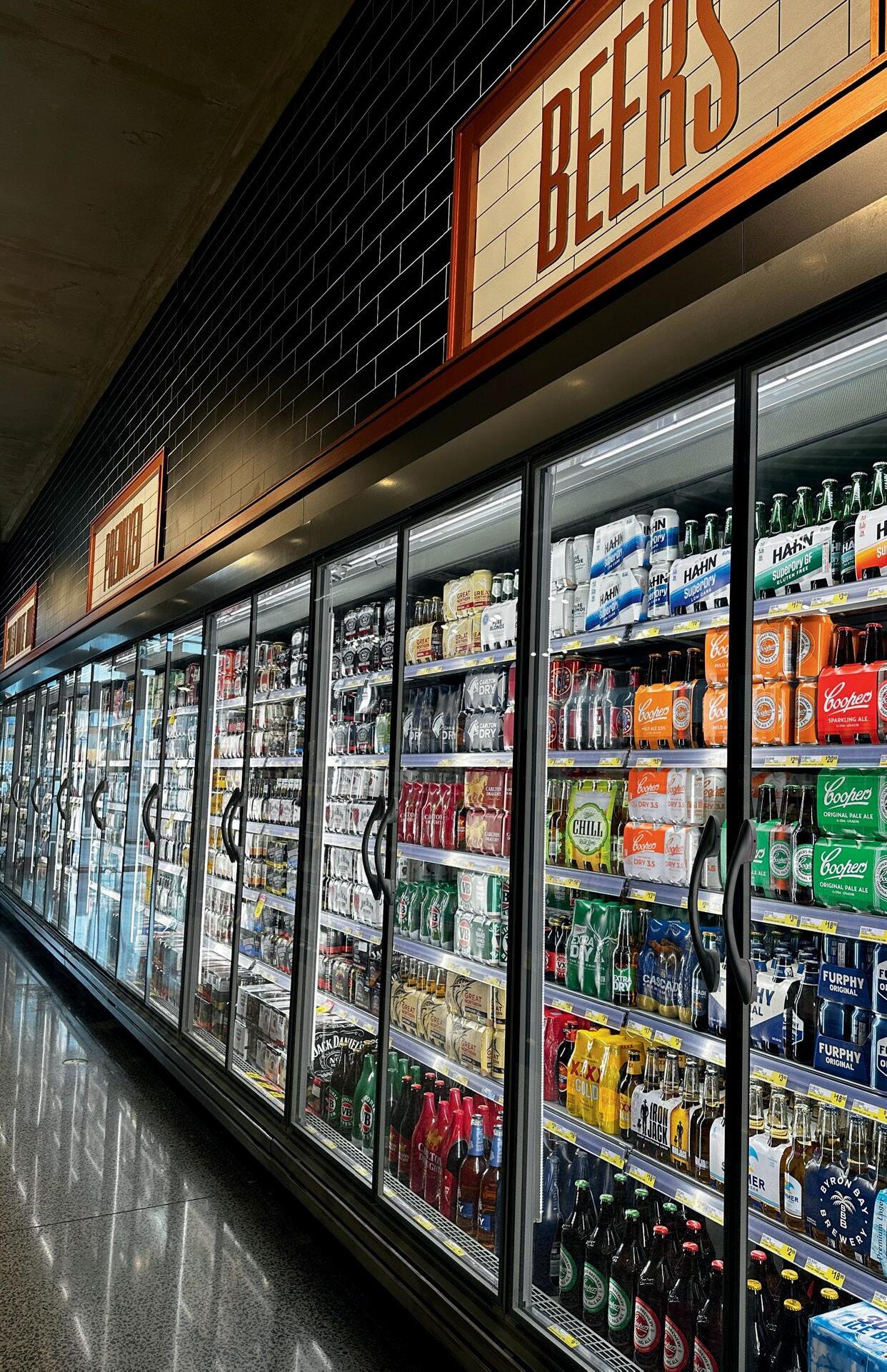
“As the pioneer of Japanese whisky, the House of Suntory played a significant role in shaping culture and leading craftsmanship in Japan over the last century. To mark this historic milestone, partnering with Sofia and Keanu, who are Suntory Whisky fans, makes perfect sense. From our fifth generation chief blender Shinji Fukuyo’s striking blends to Sofia and Keanu’s unique cinematic creations, this commemoration has surpassed all expectations to celebrate our iconic Japanese whiskies,” Potter concluded. ■


Earlier this year, Fever-Tree announced it would transition to a new operating model in the Australian market, bringing its distribution, sales and marketing operations in-house. This new direction enables the brand to build on the solid platform it has built in Australia, fuelling further growth opportunities for Fever-Tree and its trade partners.
Andy Gaunt, Managing Director for Fever-Tree Australia/New Zealand, said: “Ultimately, we won’t be changing anything for our customers and consumers - we will continue driving brand strategy and perspective. Our main objective is to give people the option of a better tasting drink, and that will always remain important.”
In recent months, Fever-Tree has built out its new and diverse team of industry professionals, with the help of dedicated drinks recruiter BrightSide.

“The fresh new team brings passion and dedication and enables additional support to be given to our current partners who have worked with us to write the Fever-Tree story thus far. This gives FeverTree the ability to build and maintain richer, deeper, collaborative partnerships with a team solely focused on the premiumisation of mixers and adult drinks,” said Gaunt.
“The new team members bring different experiences from all over the drinks industry and collectively share the vision of Fever-Tree to create better tasting drinks. They are able to understand and translate this message through a collaborative environment.
“Australia is a unique market, given mixers are traditionally shopped through grocery channels that don’t stock alcohol. Our structure has been built to provide experts focused on the liquor channel through the on-premise and off-premise, with a sales function supported by shopper and sales, and including logistics and supply.”
Fever-Tree’s new direction also includes a commercial partnership

with Remedy Drinks. Gaunt called this a “perfect pairing”, melding Remedy’s capabilities and expertise in the grocery channel with Fever-Tree’s leadership in the liquor industry. The partnership is set to unlock mutual growth for the companies as they focus on delivering premium mixer options for their similar sets of shoppers.
All of this comes at a key moment in the Australian market right now. The overall premium mixer segment is an important one locally right now, as consumers keep learning how to embrace more discerning mixed drink choices. With its new direction, Fever-Tree is set to continue its key role as a category leader that drives this journey.
“Premium mixers are still emerging within a category dominated by mainstream international soft drink companies and home brands. But they are experiencing growth even in challenging times, especially as we see more consumption across mixed drinks, so we see an incredibly exciting future to provide choices in mixers across all variations - from carbonated sodas and tonics to non-carbonated mixers with cocktail ‘ready to mix’ options,” Gaunt said.
Consumption trends support this future potential - long and refreshing, easy to make cocktails are seeing strong growth amongst consumers both in venues and at home.
“As we emerge out of three years of the pandemic, we’re excited about the opportunities to partner in the on-premise and off-premise to support the consumer demand to drink better quality mixed drinks,” Gaunt said.
“Our role at Fever-Tree as the number one pioneering mixer company globally, will look to lead the development and premiumisation of mixers within Australia.”
For any questions or enquiries about Fever-Tree and its new direction, please contact Trade Marketing Manager, Steve Carr, at Steve.Carr@fever-tree.com ■
A strong alignment of strategy with a focus on loyalty and brand was the deciding factor behind Harvest Hotel’s decision to choose and partner with ALM and IBA. Harvest Group will shift all venues across both South Australia and New South Wales, retail and on-premise, to ALM under the IBA banner group of Thirsty Camel. The transition date into Thirsty Camel has begun in South Australia with New South Wales venues to follow over the next few months.
Australian Liquor Marketers (ALM) are proud to share they are the newly chosen wholesaler and retailer of the Harvest Hotels Group. Harvest is committed to creating iconic regional pub and retail experiences and their decision is a result of a mutual vision for partnership, growth and innovation.
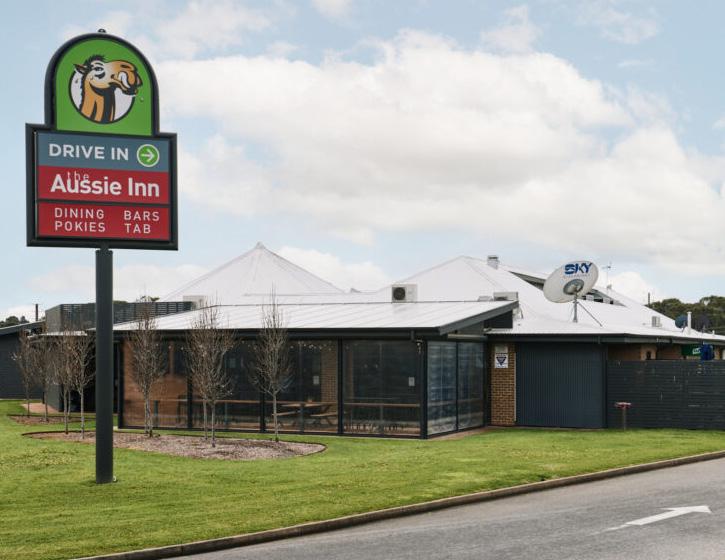
Chris Cornforth, Director and Founder of the Harvest Hotel Group said, “Harvest recognises the importance of partnering with a National Banner to support our growing portfolio of retail venues. Thirsty Camel provides us with the structure and expertise to support our growth ambitions, through their key retail program which is built on data, insights and retail excellence”.
The continual and consistent focus of the ALM strategy of being frictionless in their core processes and sticky of value creation has meant they are creating famous brands in the market and it is proving to be successful in attracting large groups to join the network.
Chris Baddock, CEO of ALM, said, “I am excited to be working with the Harvest Hotel Group. During all our discussions, we agreed partnership was central to both The Harvest Group and IBA. A partnership with retailing, wholesaling and suppliers is essential to meeting consumer needs every day.”
Having been exposed to Thirsty Camel in South Australia, the Group holds a strong affinity for the brand which exudes great energy and promotes shopper experience; characteristics they know will resonate well with consumers everywhere from Adelaide to Regional NSW.
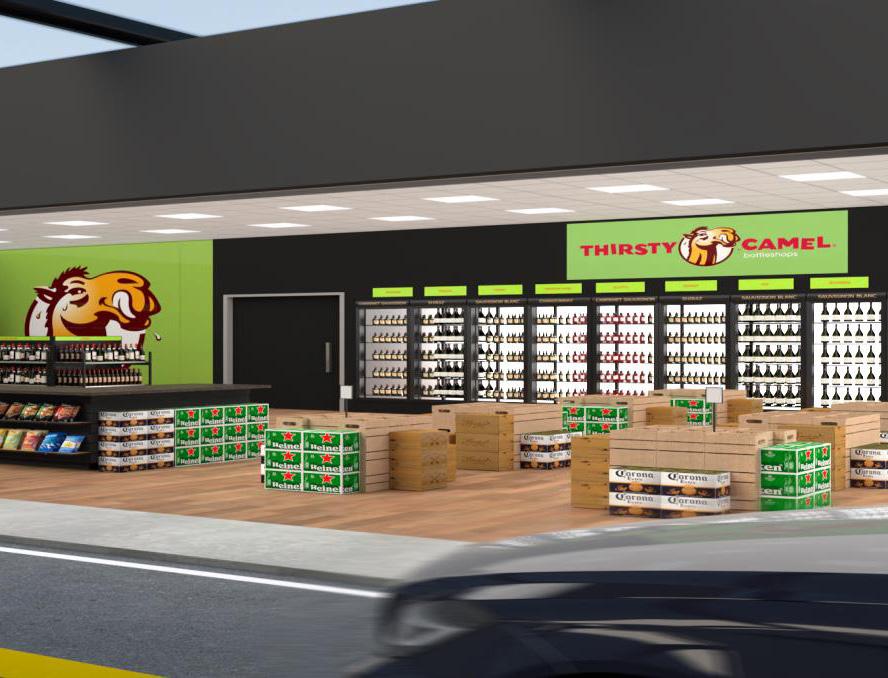

ALM’s network of the future has a clear focus on loyalty, with demand from retailers to join the loyalty program growing across all banners. Chris Cornforth added, “Loyalty is an important offering and Thirsty Camel’s Camel Card and Hump Club will work with our Harvest Gold loyalty program.”
The ALM purpose of Championing Successful Independents has never been stronger, with another large group joining the network to offer the support in becoming the best store in your town. ■
Giesen Group’s range of non-alcoholic wines under the Ara Zero label have been making a splash, taking out a huge amount of awards in the past year.
The range initially launched with the Ara Zero Sauvignon Blanc, showcasing all the great things about Marlborough Sauvignon Blanc, without the alcohol. The wine has been a high point scorer across the globe, receiving 95 points at the International Wine & Spirit Competition, and has also won big at notable international awards, taking up multiple medals and trophies.
The most recent launch from the range is the Ara Zero Rosé, a dry, delicious and refreshing wine that delivers everything consumers have come to love about Marlborough rosé, just without the alcohol. Ara Zero Rosé is expertly crafted as a full-strength wine by Senior Winemaker Jeremy Tod, who delicately removes the alcohol using advanced spinning cone technology. The remaining wine features balanced notes of strawberry, lime and guava with crisp citrus, a subtle sweetness and a fresh and moreish finish.
This latest release from Ara Zero follows the brand’s highly awarded nature, stacking up to full strength rosé wines at the Royal Hobart Wine Show to become a bronze medal winner. But that’s not all to love about Ara Zero Rosé and Sauvignon Blanc – they are also lower in calories, with only 23 calories per 125ml serve, and certified vegan friendly with Vegetarian Society UK.
Ara Zero is a serious contender in the non-alcoholic wine market of Australia, distributed locally by Oatley Fine Wine Merchants.
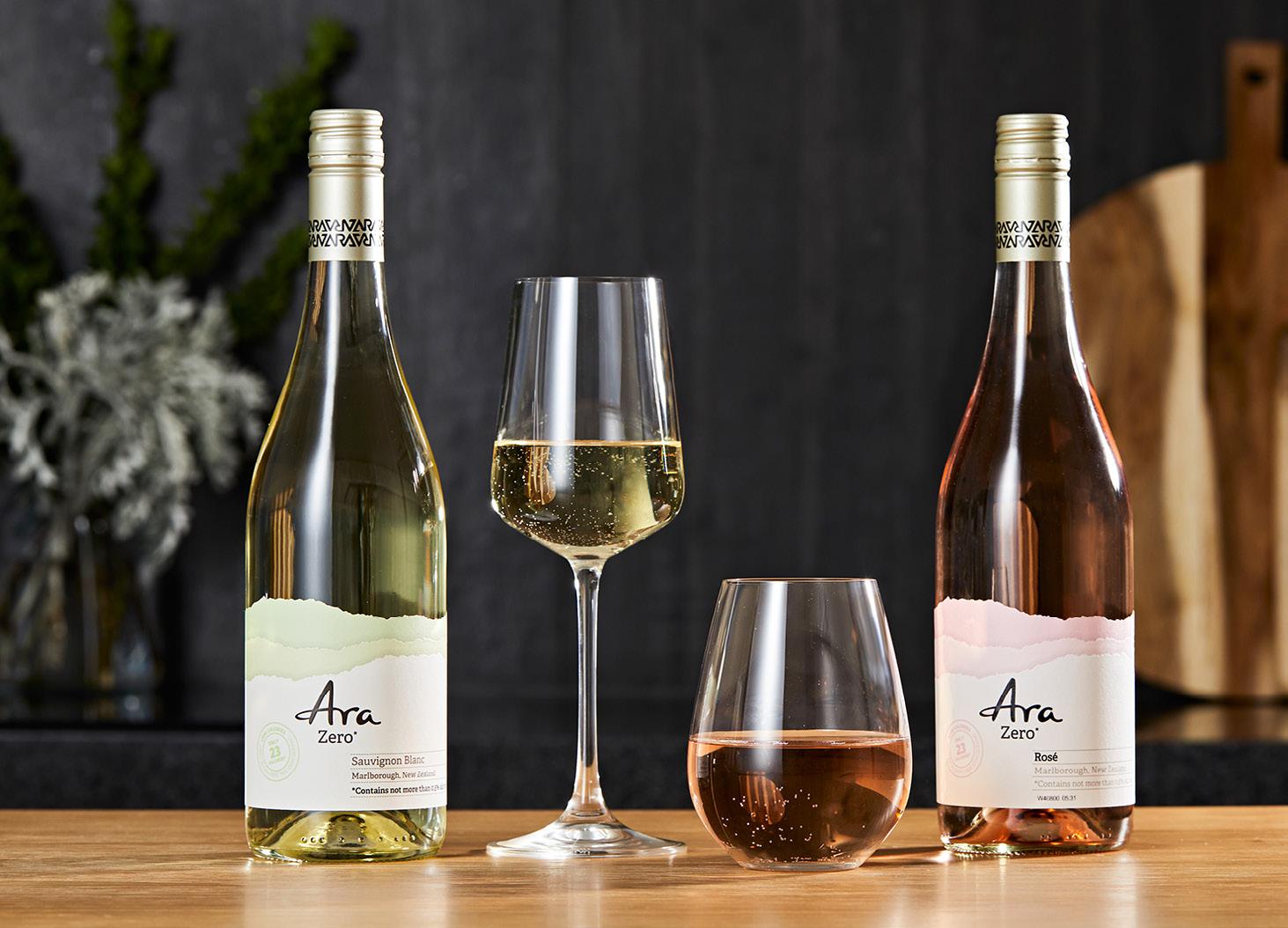
Diageo Australia has announced that it will be taking over the distribution of Mr Black Coffee Liqueur from 1 July 2023.
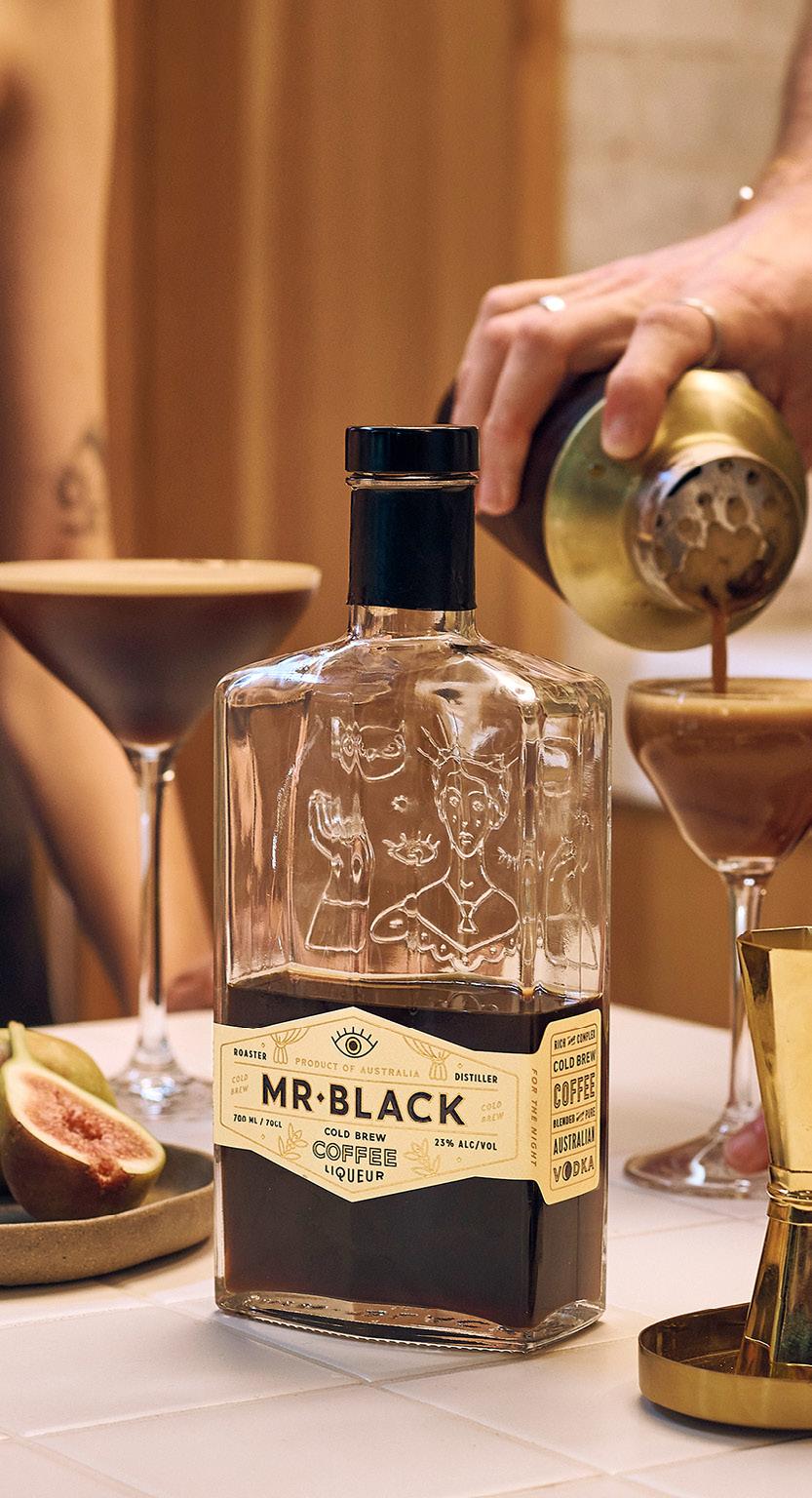
“We are looking forward to working with our new Diageo family to build on Mr Black’s success to date. It’s been a genuine pleasure working with SouthTrade over the last four years, and we’re grateful for their dedication to Mr Black and Aussie craft spirits generally,” said Tom Baker, Founder of Mr Black.
“Aussies love coffee - it’s a part of our national identity. High quality coffee liqueurs are really just an expression of that, but during cocktail hour. Outside of Bailey’s, I don’t think other categories of liqueurs have the same deep consumer obsession.”
Mr Black was launched in 2013 by designer Tom Baker and award-winning distiller Philip Moore, with the vision of bringing Australian coffee culture to the world of spirits and cocktails. Over the last five years, Mr Black has been the fastest growing brand in the global coffee liqueur category. The brand was acquired by Diageo in 2022.
William Grant & Sons Australia is delighted to announce that The Balvenie Caribbean Cask 14-year-old is back in stock and available for order.
If you are not yet familiar with this whisky connoisseur’s favourite, The Balvenie Caribbean Cask 14-year-old single malt whisky is a testament of how cask finishing has elevated single malt whisky. It is part of the most popular Balvenie collection, Cask Finishes, alongside the classic and iconic whisky, The Balvenie Double Wood 12-year-old.
As hinted by its name, The Balvenie Caribbean Cask 14-year-old single malt whisky has been matured in traditional oak whisky casks for 14 years before being ‘finished’ in casks that formerly held Caribbean rum. And not any ex-rum casks… To create the ideal finish Malt Master David C. Stewart MBE filled American oak casks with his own blend of select Caribbean rums. When he judged the casks to be ready, the rum was replaced with the 14-year-old whisky and the wood was put to work adding the final touches.
The result is an exceptional single malt whisky with the traditional smooth, honeyed character of The Balvenie married with notes of toffee and a hint of fruit, with a warm, lingering finish. It is best enjoyed neat and paired with an aged cheddar or dark chocolate with orange.
The Balvenie Caribbean Cask 14-year-old is now available at $165 RRP per 700ml bottle, alongside The Balvenie Double Wood 12-year-old at $125 RRP per 700ml bottle.
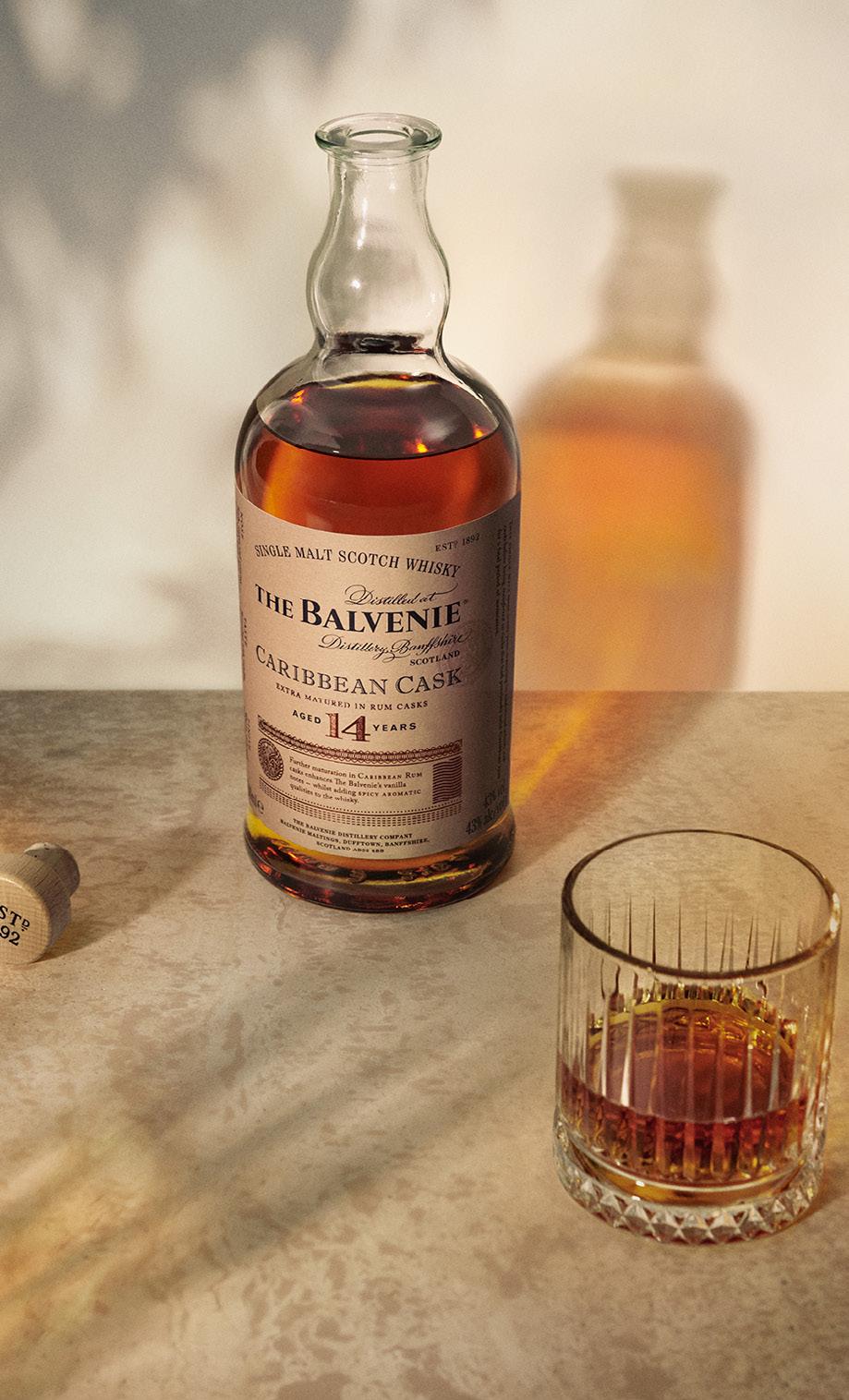
Tulchan Gin has launched in Australia, bringing its proud Scottish roots to our shores in the form of a super-premium gin from one of the world’s distilling capitals, Speyside.

Tulchan Gin hails from the Tulchan Estate, 22,000 acres of lochs and glen with eight miles of the River Spey, located in the heart of Speyside. It is a gin that has been crafted with whisky drinkers and gin lovers in mind and really draws on its Scottish identity through the botanicals in the gin and an outstandingly Scottish bottle.
Brand Lead, Kara Anderson, said: “Tulchan is made in Speyside and I think that’s a real differentiator, it really separates us. Speyside is for me, and many others, the epitome of distilling heritage. There’s been nearly 200 years of making all kinds of spirits in Speyside, not just whisky, but they do make some of the best Scotch whiskies in the world. It’s just perfect real estate to make spirits and in particular whisky and gin.”
Tulchan is a London Dry-style gin, so it’s juniper-forward with lots of citrus notes, but there are 14 other botanicals in the spirit as well. It comes in at 45 per cent ABV, in a brilliantly Scottish bottle which is blue to reflect the River Spey, with bespoke Tulchan tartan on the side and proper cork stopper complete with thistle and a grouse piper on the label. Available now through Amber Beverages.
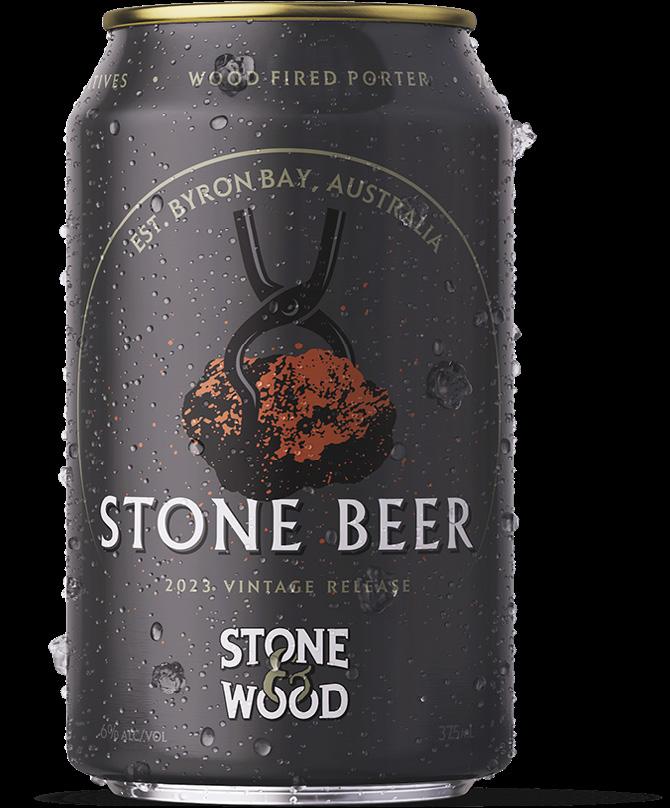
Stone & Wood’s winter seasonal beer has returned for 2023, and this year is a dark winter porter. The beer was crafted using an ancient brewing technique of lowering wood fired stones into the kettle, which gave the beer its name.
This year’s brew utilised choice Australian and German malts and is infused with aromas and flavours of coffee, rich dark chocolate, and hints of subtle smoked barley. Stone Beer 2023 is near-black in colour and finishes with a rich smooth malt character and firm bitterness. It pairs well with beautifully with grilled meat, hard cheeses, and excellent with anything containing chocolate.
Stone & Wood has also released the 2023 Barrel Aged Stone Beer – a jet black porter that has been aged for 12 months in whiskey barrels. It offers a strong malt profile of chocolate and coffee flavours, with added notes of whiskey and oak. Rich, smooth and full bodied, it has a medium bitterness and low hop profile that balances the roasted malt flavours. It is best paired with rich, dark chocolate dessert.
Little Drippa was a well-kept secret in the bartending world but is now available for all to purchase. The Melbourne-made cold extracted coffee makes for an effortless espresso martini, providing a classic coffee taste without the fuss of a coffee machine.
Not to be confused with coffee liqueur, Little Drippa is an alcohol-free cold drip extracted coffee that was created with consistency in mind, so every tipple tastes the same as the last. With no added sugar and a 24-month self life, it is a welcome addition to any home bar.

Dylan Alexander, CEO of Little Drippa is looking forward to sharing Little Drippa with the nation.
“We are so excited that Aussies can finally get their hands on Little Drippa. We are extremely proud of this product, and for so long it has been every bartender’s little secret; we thought it was time to share it with the world,” Alexander said.
“The idea for Little Drippa was simple, we love espresso martinis and wanted to create a product that cut down on hassle and ensuring consistency in flavour, Little Drippa is a guaranteed delicious coffee cocktail - every time.”
Melbourne-based bottled cocktail company The Everleigh Bottling Co. has joined the distribution portfolio of independent spirits company, Proof & Company.

The Everleigh Bottling Co. was founded by longstanding hospitality professionals Michael and Zara Madrusan, and produces bottled cocktails inspired by old-world elegance.
Damian Kaehler, General Manager of Proof & Company, said: “We are honoured to be partnering with The Everleigh Bottling Co. and warmly welcome them into our portfolio for distribution. Michael and Zara are passionate individuals and have made significant impact in our industry. They have successfully curated an extraordinary suite of brands that brings the bar to your home. Their story has deep synergies with Proof and Company; we’re of the same DNA and look forward to what’s to come from this partnership.”
The current range of classic cocktails, sparkling cocktails and non-alcoholic sparkling cocktails will be available through Proof & Company, alongside a new release in the non-alcoholic sparkling cocktail range.
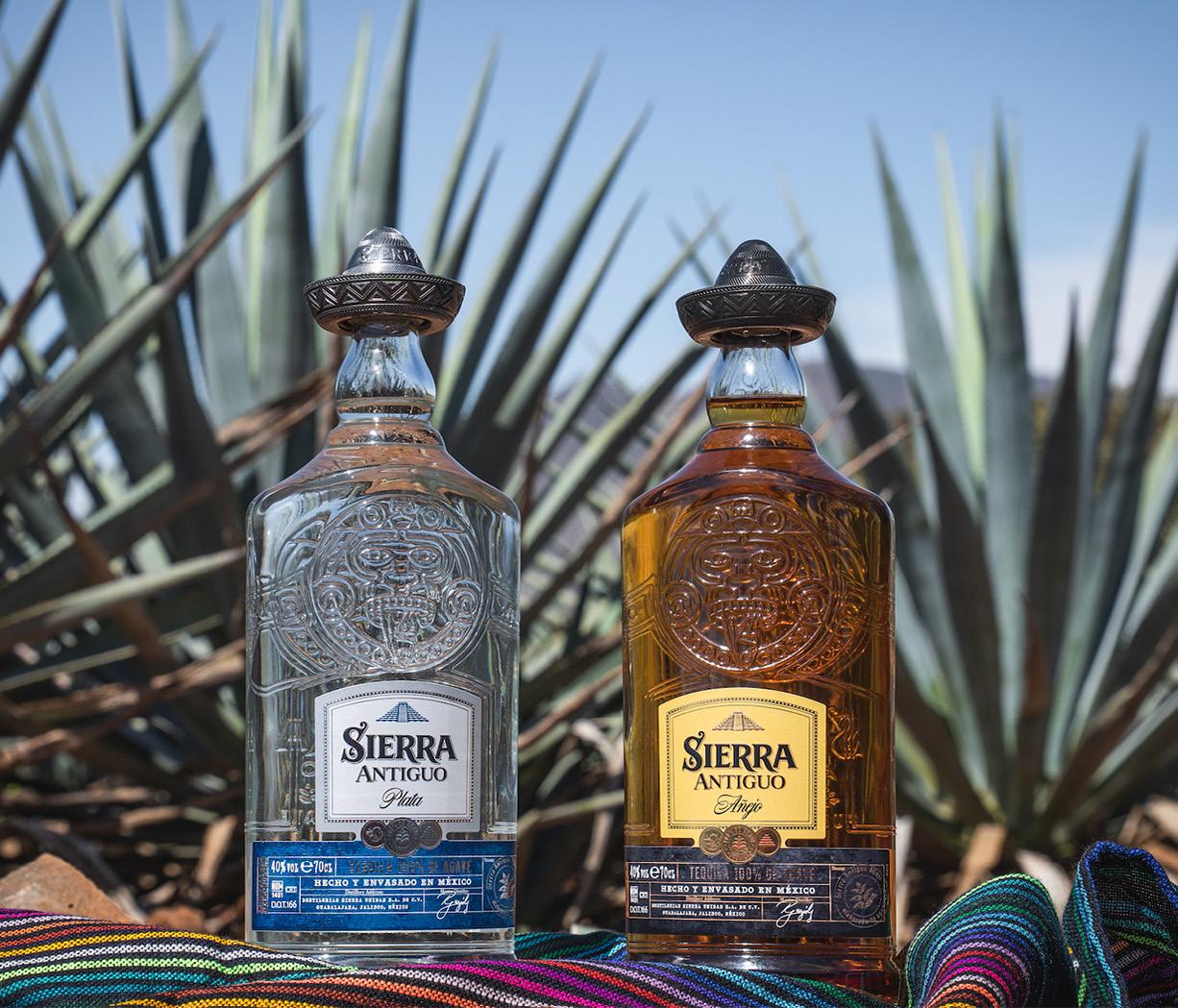

The Sierra Antiguo range has launched in Australia, bringing a new 100 per cent blue weber agave tequila to the market. Sierra Antiguo is produced by a family-run distillery in Destilerías Sierra Unidas in the highlands of Guadalajara. Because of the distillery’s sunny, low-rainfall climate, the agaves grown for Sierra Antiguo are free from artificial fertilisers and industrial irrigation.


The range is comprised of two tequilas - Sierra Antiguo Plata and Sierra Antiguo Añejo. Sierra Antiguo Plata is a smooth tequila with a fresh aroma, fruity sweetness, and notes of citrus and clear agave notes. The more full-bodied option is Sierra Antiguo Añejo, which has a warm, deep golden colour and a full-bodied yet fine taste. Flavours include vanilla, oranges, cloves and pepper with a fruity finish.
Mario Kappes, Global Advocacy & Education Manager for Sierra Tequila, is excited about the release.
“We’re thrilled to expand the Sierra brand into the Australian market with the launch of Sierra Antiguo, our 10 per cent Agave range. Our biggest intention with our brand is to be able to provide all our tequila lovers with a 100 per cent agave tequila with the best mixability for margaritas and other tequila drinks. 100 per cent agave, 100 per cent creatividad!” Kappes enthused.
“Many Australians have been fans of Sierra Silver Tequila for a long time, and now we’re upping the game with a more premium offering. We believe that the better the ingredients, the greater the indulgence – this range brings just that.”

Proof Drinks Australia has partnered with Cavu Distilling to distribute Nil Desperandum Rum and Sunshine & Sons Gin nationwide.
The announcement comes as Nil Desperandum ‘Special’ is released, a two year old rum that has been certified as organic.

Managing Director at Proof Drinks Australia, Drew Doty, said: “Proof Drinks Australia is thrilled about partnering with Cavu Distilling. Proof is dedicated to delivering what we believe to be the finest premium brands to both Australian and international consumers.
“The addition of Nil Desperandum and Sunshine & Sons to our portfolio aligns seamlessly with our business objectives, and the promising potential for our organisations to flourish together is truly invigorating.”
Matt Hobson, Co-founder of Cavu, added: “Since the launch of Sunshine & Sons Original Dry Gin in March 2020 the two Cavu brands have achieved meteoric success and we are super excited to continue our journey with the incredible team at Proof Drinks Australia.
“Proof Drinks Australia are passionately committed to exciting, quality spirits with compelling points of difference to consumers that have national scale and international reach. We look forward to working closely with the Proof Drinks Australia team and meeting and exceeding the needs and expectations of the on and off premise trade across Australia and internationally.”
Winesmiths has released a limited edition set of 2 litre wine packs featuring designs by South Australian artist Billie Justice Thomson.
Thomson is known for her nostalgic depictions of iconic food and drinks, and she has turned her focus to Australia’s native flora and the native honeybee for the limited edition Winesmiths packs. These striking designs will draw attention to wine shelves and raise funds for the Wheen Bee Foundation.
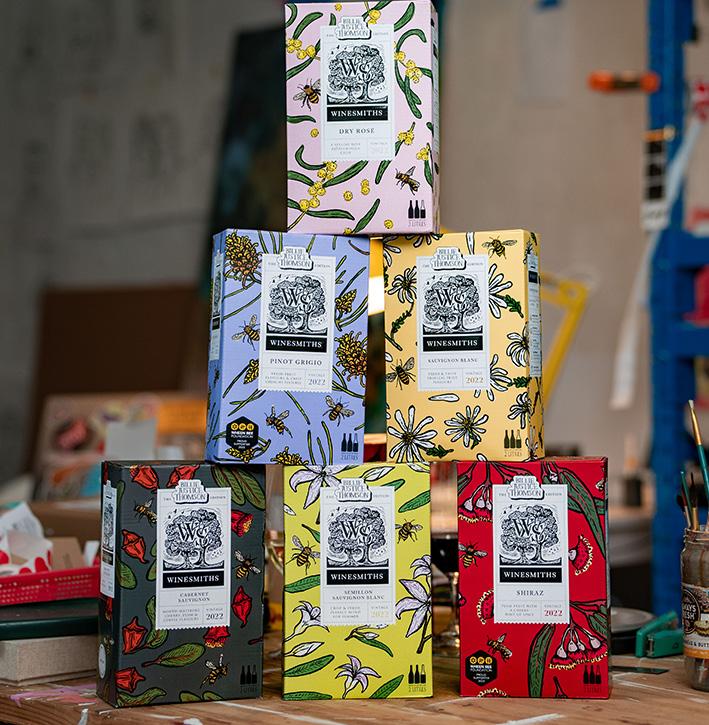
Thomson drew much of her inspiration from vineyards.
“Bees and native plants play an important role in the biodiversity of vineyards and ultimately in the wine itself. I’ve always been attached to natives, they’re so uniquely Australian. They’re so rugged and often a little bit strange,” she said.
“Just like an artist, our vineyards require as much love and attention to drive a healthy eco-system, delivering beautiful natural flavour and yield. We don’t compromise on quality in any way,” explained Winesmiths’ Senior Brand Manager Lisa Antoney.
Fiona Chambers, Wheen Bee Foundation CEO, expressed her gratitude at the initiative.
“As a charity we value Winesmiths’ generous support, which enables the Wheen Bee Foundation to continue important projects to support bees and bee research,” she said.
The limited edition designs appear on packs of Sauvignon Blanc, Semillon Sauvignon Blanc, Pinot Grigio, Shiraz, Cabernet Sauvignon and Dry Rosé, with part proceeds from the Shiraz and Pinot Grigio going to the Wheen Bee Foundation for research.
The Winesmiths x Billie Justice Thomson Limited Edition packs will be in stores from August.

De Bortoli has added a new wine to the portfolio, releasing Handcrafted Heathcote Shiraz. The wine is handcrafted by Chief Winemaker, Steve Webber, using meticulously and purposefully chosen small parcels of Shiraz grapes.
The Heathcote region is well known for its intense and full bodied Shiraz wines that feature distinct structure and fruit-driven characteristics. Webber notes that Handcrafted Heathcote Shiraz exhibits these qualities while also being quite ‘supple, relaxed, ethereal and compelling.’ This allows the unique characteristics of the region and the carefully chosen grapes to shine in the glass, with a noticeable difference to other Heathcote Shiraz wines on the market.
“Heathcote has a long history of growing Shiraz of extraordinary quality. The ancient Cambrian red soils of the region give flavours of dark berry fruits and violets combined with lovely texture and feel,” said Webber.
On the nose of the Handcrafted Heathcote Shiraz, you can expect haunting, deeply scented forest aromas, while the palate follows with dense, mouth filling flavours with dark fruits and earth.
BOOK TICKETS NOW FOR THE
Friday 18 August 2023
Lunch 12.30pm
Grand Ballroom Hyatt Regency
Sydney
$195 (WCA members)
$225 (non-members)
Full table $1941 (table of 10)
Retail Drinks advocates on behalf of liquor retailers to ensure our industry’s needs and interests are considered and represented in government decision-making.

We aim to ensure policy outcomes are based on credible evidence and reliable data, as opposed to unproven concepts or assertions pushed by other stakeholders. When an evidence-based approach is taken towards policymaking, and is supported by robust data, it is far more likely that optimal policy outcomes are achieved.
Unproven concepts like liquor licence density and alcohol-related harm being incorporated into regulatory policy decision making is concerning. For example, the South Australian Government is proposing to include licence density as a criterion against which future applications for liquor licences are assessed, as part of their draft Community Impact Assessment Guidelines – a myopic view which ignores a lack of any credible evidence or reliable data establishing a causal nexus between licence density and alcohol-related harm.
The SA Government has also recently implemented restrictions on takeaway alcohol sales in the Adelaide CBD in response to instances of anti-social behaviour. In engaging with government on this issue, Retail Drinks emphasised the need for such restrictions to be underpinned by robust data rather than relying on anecdotal reports from stakeholders. Any continuation of these restrictions should involve a thorough consultation process with industry.
We’ve also seen renewed calls from some advocates for Minimum Unit Pricing (MUP) to be rolled out into jurisdictions beyond the Northern Territory, without any robust evidence proving that the MUP scheme was successful. We recently published a letter to the editor in the NT News, highlighting the flaws in a recent research article on MUP supporting this policy. Our letter called out several facts, including that the ‘selective’ study was misleading as it specifically excluded cask wine drinkers – the very cohort the measure impacted the most.
Even though alcohol consumption in the NT had been in steady decline for years prior to MUP commencing, with adult abstainers doubling to one in five between 2010 and 2019 and the rate of risky drinking dropping, its introduction has had the opposite effect.
The regulatory environment continues to present challenges as governments react to community issues with policy changes ‘on the run’ which provide significant costs and inconvenience to consumers and retailers, often without a credible evidence base and stimulated by anti-alcohol advocacy, and unfortunately without solving the issue in question.
Retail Drinks continues to search for opportunities to work together with governments, regulators, and community stakeholders on evidence-based and targeted policies that nurture a stable political, social, and commercial environment in which the entire retail liquor industry may grow sustainably. ■
 Retail Drinks CEO, Michael Waters, discusses how the organisation is advocating for regulation that is effective in addressing industry issues.
Retail Drinks CEO, Michael Waters, discusses how the organisation is advocating for regulation that is effective in addressing industry issues.
Michael Waters CEO Retail Drinks
“When an evidence-based approach is taken towards policymaking, and is supported by robust data, it is far more likely that optimal policy outcomes are achieved.”
Simon Strahan, CEO of DrinkWise, discusses the launch of a new initiative to address harmful drinking in Queensland.
The latest Australian Government statistics confirm that Australians are continuing to make healthier and safer decisions with respect to their alcohol consumption. Over the past 15 years we have seen drinking habits change substantially, with the overwhelming majority of people who choose to consume alcohol drinking in moderation and within the government guidelines. However, there are still some who are drinking at risky levels, engaging in antisocial behaviour or turning to alcohol as a coping strategy.
DrinkWise research revealed Queenslanders (34 per cent) are significantly more likely to be drinking alcohol at risky levels when compared with the nation’s average (28 per cent).
To continue to help address this, DrinkWise and the Queensland Hotels Association (QHA) have partnered on a campaign to remind regional Queenslanders who choose to purchase and drink alcohol about the importance of moderating their alcohol consumption and always being respectful towards others.

The new initiative has been supported by Queensland Police, Member for Cairns and Assistant Minister for Tourism Industry Development Mr Michael Healy, Mayor of Cairns Cr Bob Manning OAM, Clubs Queensland and the North Queensland Cowboys – all wanting to ensure that safe and respectful environments in our communities.
To ensure a whole of community approach was taken, we also worked with support services including, Lives Lived Well, ReachOut, 13YARN, 1800RESPECT, DVConnect and Men’s Referral Service. This important element of the campaign helps ensure people who might be having trouble managing their alcohol consumption or their behaviour know that support services are available and that asking for help and advice is okay.
Moderation, respect and responsibility themed posters, coasters, and digital assets are being rolled out to over 115 pus, bars and bottle shops throughout Cairns, Townsville and Mount Isa, with Clubs Queensland also supporting the initiative in their venues across the state. Geo-location targeted moderation, mental health and support service social media messaging is also being implemented to help embed these important health messages.
QHA Chief Executive, Bernie Hogan, said: “QHA is proud to support this initiative to remind patrons that having a great experience at licensed venues means respecting those around you
and consuming in moderation if drinking alcohol. It is important that QHA are helping promote messages that encourage conversations about mental health, with pubs integral to our regional Queensland communities. We want to ensure that as our customers come together at licensed venues, to socialise, have a meal, catch up with friends and family, that they have a great time and they also use these opportunities to talk about local issues and support each other.” ■
DrinkWise was recently recognised for the impactful and effective parental supply campaign It’s okay to say nay, with a win at the Melbourne Advertising Design Creativity awards and a highly commended at the Mumbrella CommsCon Awards. While our focus is on delivering programs that help enable a safer and healthier drinking culture in Australia, it is nice that these awards recognise the innovative approach DrinkWise takes to alcohol education initiatives and the impact they have on the attitudes and behaviours of Australians who choose to drink alcohol.
Chardonnay has long been the most planted white winegrape variety in Australia and second overall to Shiraz. The Chardonnay crush in Australia grew from 1,000 tonnes in 1979 to 28,000 tonnes in 1989 and reached a peak of 428,000 tonnes in 2008. In 2022, just under 360,000 tonnes of Chardonnay was crushed across Australia, accounting for 46 per cent of the national white crush – almost four times the share of Sauvignon Blanc.
Chardonnay is grown in all states in 57 of Australia’s 65 GI regions, from the Granite Belt in the north to Tasmania in the south, and from Margaret River in the west to Hastings River in the east.
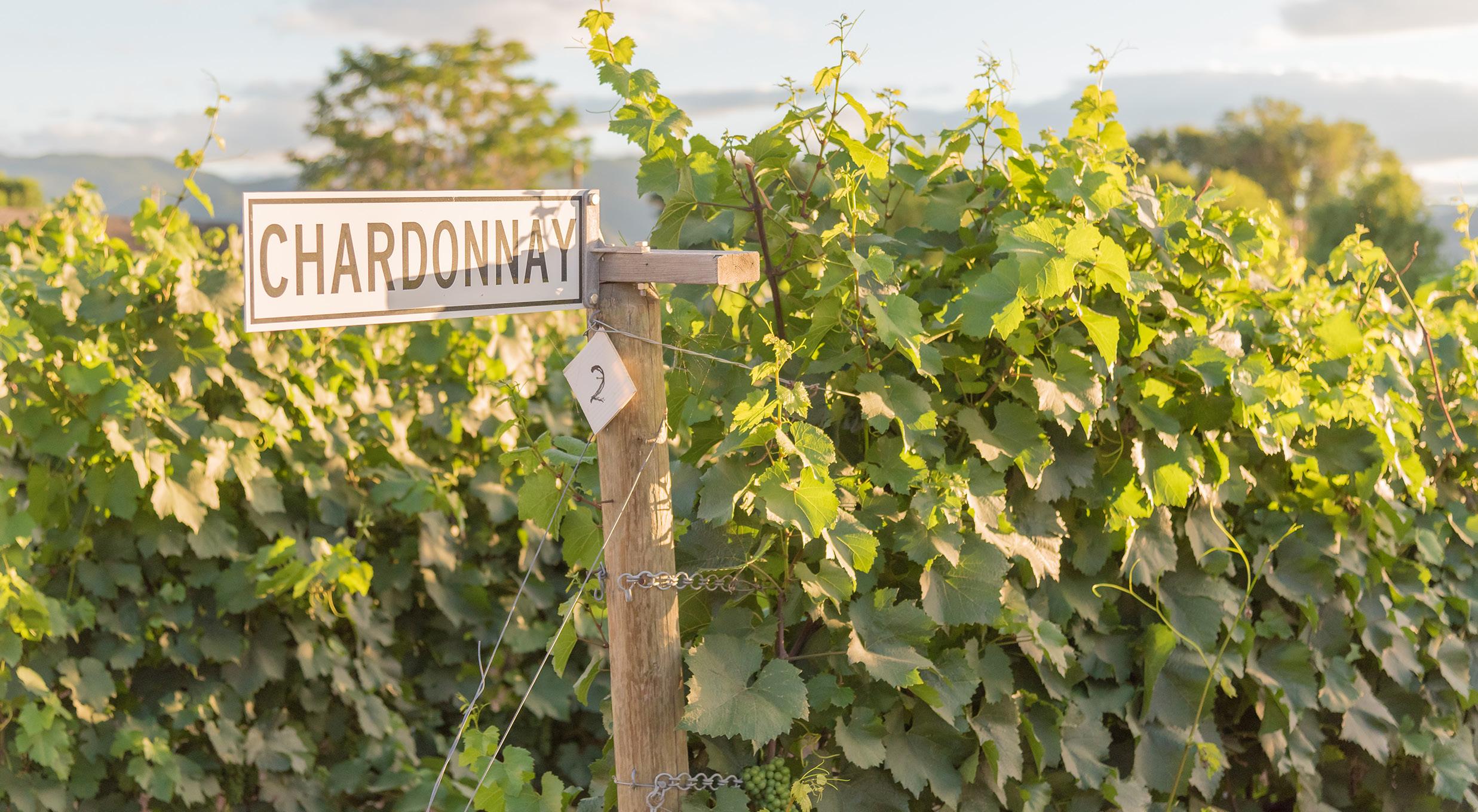
The average price paid for Chardonnay grapes has been rising. After reaching a low of $304 per tonne in 2014, the price paid for Chardonnay has steadily risen, peaking at $532 per tonne in 2021, before dropping back slightly to $517 per tonne in 2022.

The rise in the price paid for Chardonnay grapes has been assisted by the growing demand for premium Australian Chardonnay wines in the domestic market. Data from IRI MarketEdge shows that while the value of Chardonnay sales in the domestic off-trade market fell by 0.3 per cent in the 12 months ended 1 January 2023, there were varying performances by price segment. Chardonnay sales declined below $15 per bottle but have seen growth above $15.
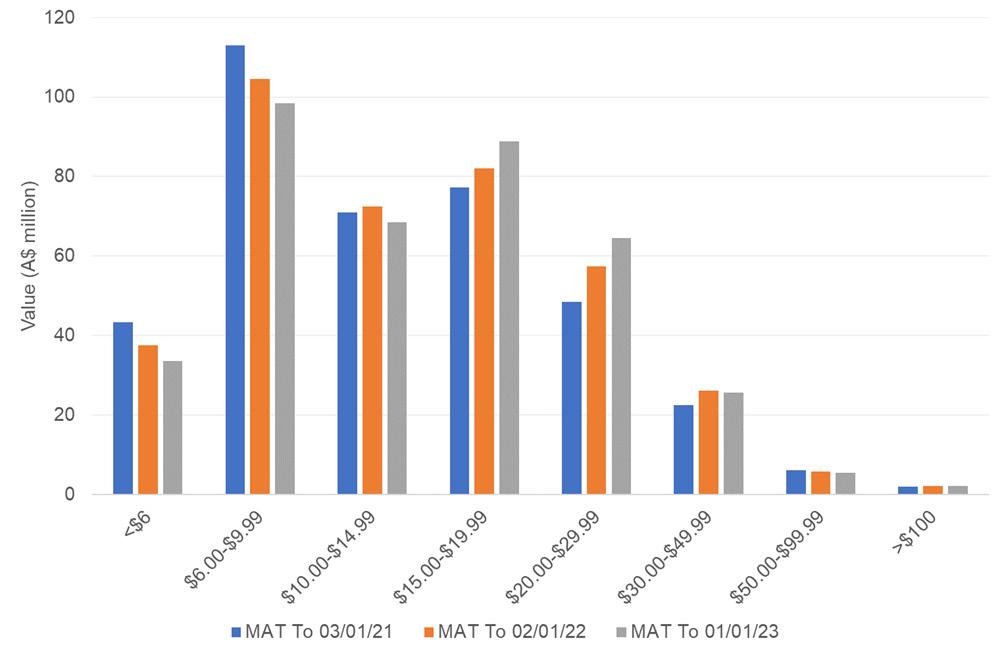
A quarter of Chardonnay sales were at $6.00 to $9.99 per bottle but sales value fell by six per cent. Conversely, sales at $15.00 to $19.99 grew by eight per cent and at $20.00 to $29.99 by 13 per cent. At $20.00 to $29.99 per bottle, Chardonnay outsells Sauvignon Blanc by $16 million.
There has also been growth in Australia’s exports of Chardonnay. In the 12 months ended March 2023, exports of wines labelled as Chardonnay increased by three per cent in value to $327 million and in volume by nine per cent to 176 million litres compared to the
same period in 2022. By volume, Chardonnay is now the number one variety exported ahead of Shiraz.
Most of the growth in the past 12 months has come at below $2.50 per litre, up 19 per cent to $148 million. There was also strong growth at $10 or more per litre, albeit off a lower base, up 22 per cent to $25 million. ■
 Average purchase price of Chardonnay in Australia ($ per tonne). Source: Wine Australia.
Value of Chardonnay sales in the domestic off-trade market. Source: IRI MarketEdge.
Average purchase price of Chardonnay in Australia ($ per tonne). Source: Wine Australia.
Value of Chardonnay sales in the domestic off-trade market. Source: IRI MarketEdge.

This year’s Vinexpo Asia was the first time that the trade show had been held in Singapore and the first Vinexpo Asia since the pandemic. The event attracted exhibitors from more than 30 different nations, while nearly 10,000 trade professionals visited the show from 64 countries.
Singapore is a centre of international trade and a gateway to Asia for the wine trade. As such, there was significant representation from producing nations from around the world, and key industry trends on show.
Preferences in the Asia-Pacific region are likely to have ramifications in Australia (and for domestic retailers) too, so it was intriguing to see what Australian exhibitors reported.


“Australia definitely has a purity and flavour profile that I think resonates. Quite fruit-driven, soft, easy-drinking wines are good,” said Andrew Calabria, Sales & Marketing Manager at Calabria Family Wines.
Paul Turale, Marketing General Manager for Wine Australia, believes that similar
food preferences in Australia and Asia offer an opportunity for the nation’s wines.
“We are in a space where most of the cuisine in Australia is highly representative of what we’re seeing through the south east Asian market – those flavours and spices – and a lot of the wines that are being produced to match what we’re eating and drinking in Australia are absolutely geared towards the various markets here,” he said.
Fresh styles of label seem to be gaining traction too. As Rupert Steenberg, Sales & Marketing Director at Joval Family Wines, explained, this reflects ongoing trends in Australia.
“I was in Korea… The green shoots that I saw were younger, smaller, artisanal winemaking is getting going, and a lot of them had really visual labels,” he said.
“For a young demographic, very heavily on social media, very trend-focused, they’re into new alternative varieties, and I saw that from New Zealand and Australia.”
Wine and Spirits representing American producer Ironstone Vineyards, stated it plainly: “Asia in general is, as most people would say, predominantly a red market. People like red wines.
“You’re probably looking at around a 70:30 split for the majority of the region –Japan, South Korea maybe skew a little bit more even, but it’s still predominantly red.”
And this provides significant advantages for certain producing nations, America among them.
“We’ve always had a strong focus on Zinfandel… And personally, I think that this style matches a lot of the Asian region – not as many tannins, a little more acidity, perhaps making it a little bit more food friendly with a variety of dishes. I’ve noticed more and more countries are receptive to Zinfandel,” McCheane continued.
French wine group, Barton & Guestier (which also has a strong presence in Australia), had a large stall at Vinexpo Asia.
Seamus May attended the event in May, learning about key wine trends that will likely impact Australia in the near future. Photography by Richard Koh and Seamus May.Guillaume Bladocha, Export Director for Barton & Guestier in the Asia Pacific, gave his impressions from the show.
“I have noticed a constant increase in the demand for sparkling wines. Sparkling has been (and is still currently) the most dynamic wine category overall in Asia,” he said.
“We have seen a strong increase in our volumes exported in the whole APAC region, but also in the requests received for brand distribution.”
Like other exhibitors, Bladocha found that buyers were largely sticking to the classics, but were still driving the premiumisation movement.
“In this difficult economical context, we see that the consumers (and, therefore, the buyers) are less adventurous when it comes to purchasing wine and stick to the brands they know [and] they trust,” he said.
“In terms of product profile, we noticed that a much higher proportion of buyers were looking for higher quality wines (premium appellations from Bordeaux, Burgundy). End consumers drink less, but better.”
For Stephen Jones, an importer based in Hong Kong at Discover Wines Asia, it was Australia’s embrace of ‘alternative varietals’ that stood out as a key current trend.


“Particularly in Australia, we’ve seen a few producers that are using some grape varieties from Italy and Portugal that can handle extreme weather,” Jones said.
“All over the world, climate change [is] causing an issue in winemaking. So you’re seeing new trends of more hardy grape varieties that can deal with the heat.”
Jones also shared what he thought the Asian wine customer and seller was by and large looking for.
“The Asian consumer is obviously more of a novice in wine - so they look at packaging, easy to recognise labels,” he noted.
“Other than that, they’re looking for the big brands, the ones that have big points – easier for them to sell.”
One standout stall was When In Rome, an Anglo-Italian business selling Italian wines in more environmentally friendly packaging.
CEO Rob Malin explained the brand’s position and said: “Our business is founded on the premise that 40 per cent of the wine industry’s carbon footprint comes from single use glass bottles.
“We are about trying to educate the consumer both by example… We calculate and display our carbon footprint on the wine labelling.”
Malin said interest in the brand’s packaging had been “really, really strong” at Vinexpo Asia, showing the sustainable angle is a key element that drinks businesses are thinking of in today’s market. ■


Circana discusses how retailers can go beyond face value and dig into what really matters to their customers in the current cost-of-living crisis.
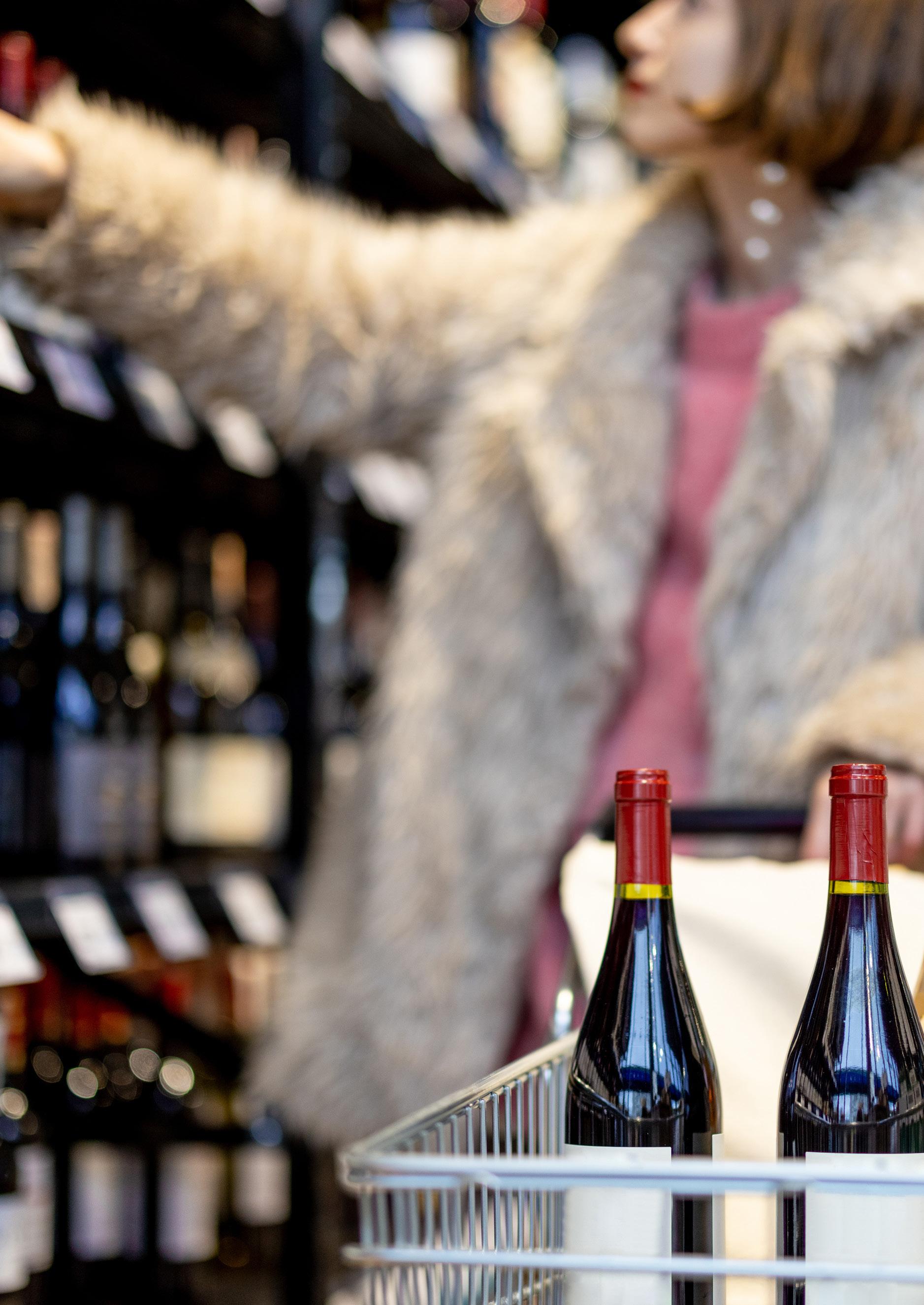
The record high cost of doing business is passing on price increases to value-craving Australians, which is hitting households hard as we grapple with the soaring cost of living.
The CommBank Household Spending Intentions retail spending index fell by 21.3 per cent in January and buy now, pay later platform debt is at its highest. Reeling from a 10th consecutive interest rate hike, three-quarters of us are concerned about paying general household bills (72 per cent), food and groceries (77 per cent), while half are worried about the cost of petrol (54 per cent) and rent or mortgage payments (46 per cent).
Aussies are also more focused on what we fill our trolleys with at the supermarket – and when. Average supermarket retail trips per shopper was down -3.7 per cent in January but we are starting to see an increase. Importantly, dollar sales are up +4.7 per cent, but more recent trading hints at an inflationary-led acceleration in sales growth while the +4.2 per cent uplift in dollars per trip is being driven by higher prices helping to compensate for the smaller baskets.
Our latest research reveals that three-quarters of shoppers now always compare prices, and seven in 10 are likely to make unplanned purchases after seeing promotions and discounts. These customers are brand switching for new and appealing features or benefits.
Two-thirds tell us that retailer/own-label products are a good alternative and three in five now make a shopping list and stick to it, making product purchase decisions when in the store. But almost seven in 10 are also shopping online the same or more than a year ago too.
It’s important to understand generational values and nuances of Aussie shoppers as sustainability (younger Aussies) and personal choice (older people) are also behind brand switching tendencies. Millennials are set to overtake Baby Boomers as the largest
generational group in Australia and are already the biggest-spending consumers in both bricks and mortar stores and online. Millennials and Gen Z together are a rising force in retail shopping, currently accounting for 36 per cent of total retail spending in Australia and forecast to account for 48 per cent by 2030. Gen Z in particular presents tremendous opportunities for brands and retailers, but these digitally native, fiercely independent consumers approach shopping with very different expectations than prior generations. Gen Z expects brands to be authentic and understand them as unique individuals to earn their dollars.

We are cautiously optimistic for 2023 but expect value-based shopping behaviours to continue to define the year. Successful brands and retailers must differentiate their customer types and quantify their sales contribution to prioritise initiatives.
Clearly, there are many headwinds, so now, more than ever, you need to know how people feel and how they’ll shop in the moment. It’s all about the experience they have and how it relates to their new values – both on and offline. Australians are open to ordering directly from you and sharing their data if it will result in a better shopping experience or reward.
Shopper data will also help you manage the social impact of inflation by differentiating and communicating what’s right from profit gain, and supporting your customers by delivering and communicating price, value and experience. You need to show your customers that you’re going through this cost-of-living crisis with them. Honesty and transparency underpin a solid relationship, especially during disruptive times. Getting your data and your omni-channel customer experience synchronised is critical for an integrated lens on how the same shopper uniquely uses each channel on their disruptive path to purchase. ■
Just because the temperature is dropping and our entertaining has moved out of the sunshine to indoors, it doesn’t mean consumers are going to say goodbye to their favourite premium mixers. Producers big and small shared their thoughts about the current trends for premium mixers and what can be done to strengthen the market.
One dominant trend is that many consumers are looking to reduce their overall alcohol intake, or to simply improve the quality of what’s in their glass. The trend is evident in the beer and wine categories but also in spirits and, by extension, in mixed drinks.
“People are taking a more conscious approach to drinking. Whereas in spirits, people are drinking less but better; with mixers the approach is flavour first, not so much zero sugar and ‘good for you’ but more ‘I like a good time and I’d like to drink something that’s better for me,’” stated Strangelove Beverage Co. Brand manager, Caitlin Lockie.
The desire to source low- or no-alcohol drinks options has also entered this realm, coupled with lower levels of sugar, according to Capi Sales and Marketing Director, Kate Solly.

“On the back of the moderation and abstinence trends, we are also seeing customers drinking mixers as a nonalcoholic alternative over ice and with a garnish,” said Solly.

A consumer focus on sourcing products made from natural, unprocessed ingredients has been matched by producers, said Mr Consistent Chief Brand Officer, Kahrissa Bell.
“The cocktail mixer category has expanded significantly since Mr. Consistent launched - when there were predominately products on the market that weren’t made with real fruit ingredients. We have seen this demand for premium mixers with a focus on true flavour profiles made from real fruit ingredients expand dramatically since launch, and don’t think this will change in the future as people become more intentional about what they consume,” said Bell.
The premium mixers category is undergoing significant change, writes Brendan Black
There can be many factors at play in regards to what influences a consumer to purchase one premium mixer over another, with a big focus on matching flavours to the alcohol in your glass, as well as the quality of the ingredients, while price may not be such a deciding factor, stated Fever-Tree Trade Marketing Manager, Steve Carr.

“Based on a recent study conducted by Fever-Tree (May 23), we know that the two most important factors to Australians when selecting a mixer brand are taste and available flavours. Australians also look for mixers that are made with high-quality, natural ingredients. Meanwhile being the cheapest price is ranked no.15 in the list of factors that are important to consumers when selecting a mixer. The mixer category has undergone significant premiumisation over the past 3 years, with premium share of mixers growing from 5% to 20% (2019-22), as they deliver on the qualities that Australians are looking for in a mixer,” stated Carr
Attitude can also be an important element, with many people simply wanting a high-quality product and being prepared to pay for it, claimed Strangelove’s Caitlin Lockie.
“Brand-conscious individuals [can be] passionate about what exactly goes into their drinks, where it’s made, what produce is used, and most importantly, want to look interesting because they turned up to a dinner party with some pretty little bottles featuring an 8 ball on the label,” stated Lockie.
The higher cost of living has made a dent in people’s level of disposable income, yet from all reports, premium-mixer producers have not experienced (yet) any hits to their bottom lines, affirmed Fever-Tree’s Steve Carr.
Steve Carr Trade Marketing Manager Fever-Tree
“Both premium spirits and premium mixers continue to grow ahead of mainstream and value products, despite cost of living pressures. While Australians are trading down in everyday items and cutting back on big ticket discretionary spend, Australians continue to seek opportunities to trade-up in ‘little luxuries’ and experiences that make them feel good. This is what premium mixed drinks and cocktails can deliver. Some Australians are choosing to visit on-premise less often than usual due to cost of living pressures and these Australians are looking to recreate bar experiences and make bar-quality drinks at home. This has given rise to what we call the ‘home premise’. Use of premium mixers in the home premise is popular as it allows Australians to make simple, great tasting mixed drinks and cocktails with few ingredients,” said Carr.
The ability to make a high-quality product at home with premium ingredients but at an affordable price is still possible, claimed Mr Consistent’s Kahrissa Bell.
“If anything, this proves the existence of the premium cocktail mixer market is even more necessary! When you can make a perfectly balanced and delicious cocktail or mocktail for $3 a serve, you can still feel as though you are having a boujie night, but on a (cheaper than) beer budget!” stated Bell.
Convenience is a key factor when it comes to competition, and the ease of buying mixers from a supermarket means liquor retailers need to make it easier for consumers to buy “what they want, where they want it,” noted Capi’s Kate Solly.
“I would encourage liquor retailers (space permitting) to merchandise complementary mixers within spirit bays and have mixers merchandised closed to counter for the last-minute impulse purchase; there is nothing more frustrating than getting home or to a party with no mixers available,” stated Solly.
Where a product is situated within a store obviously has much
“Driving visibility of mixers at point of purchase will result in higher basket spend.”
impact on its visibility and therefore if a consumer is more likely to purchase it, stated Fever-Tree’s Steve Carr.
“There is still the element of impulse buy for immediate consumption. Bundle deals work well along with product positioning in store on gondola ends paired with matching spirits. Placement of product near the counter results in a significant sales uplift for the liquor retailers. Driving visibility of mixers at point of purchase will result in higher basket spend. Consumers will generally pay more for a mixer when purchasing alcohol from bottle shops,” said Carr.
In the cooler months, many people will opt for red wine over white, or possibly spirits over beer, and mixers may also become less popular as a go-to drink, yet much can be done by retailers to turn this around, believes Fever-Tree’s Steve Carr.
“Focus on warming flavours and positioning autumnal coloured spirits and mixers together for ease of purchase. As humans, our palates change seasonally; in the cooler months we naturally gravitate towards bolder flavours, perhaps we perceive them to be more nutrient rich. We also gravitate more towards carotenoid/caramel colours in the cooler months, just thinking of a whisky & ginger, pumpkin soup or a sticky date pudding makes me warm and fuzzy!” stated Carr.
This view is echoed by Strangelove’s Caitlin Lockie. “Look to warmer flavours and recipe inspiration. Think Hot Ginger Beer and whiskey, Shiraz gin and Bitter Lemon tonic, Lime and Jalapeno. Inspiration is key here.”

The desire for warmth in winter (from our heaters and drinks) offers retailers a chance to focus on different flavours, stated Mr Consistent’s Kahrissa Bell.
“Whilst we know cocktails and summer are synonymous, at Mr. Consistent we have been working with retailers to embrace winter, rather than escape it! Choose your darker spirits, and match them with some amazing cocktail mixers such as sours - and you have a winning combination!” said Bell.
There are many ways in which producers can increase the appeal of their premium mixers to the public, claimed Strangelove’s Caitlin Lockie.
“Keep experimenting. Keep things interesting. Keep pushing flavour boundaries. Take risks. Not everyone will like what you do, but at least you aren’t boring,” stated Lockie.
Education, collaboration and accessibility are three main ways for the appeal of premium mixers to be heightened, believes Capi’s Kate Solly.
“Educate consumers about the value and versatility of premium mixers through social media and a content-rich website, including recipes and perfect pairings.

Collaborate with established spirit partners to reach a wider audience and leverage their existing customer base. Make premium mixers accessible through various retail channels, including online platforms, to expand reach and convenience for consumers,” said Solly. ■

SALTED GRAPEFRUIT MIXER. WHY?
BECAUSE TEQUILA.
ZESTY WHITE GRAPEFRUITS FROM MILDURA. MURRY RIVER PINK FLAKE SALT. SIMPLY ADD ANY PREMIUM TEQUILA AND YOU HAVE YOURSELF A ONE WAY TICKET TO PALOMA TOWN.

Australians have long appreciated American whiskey, and Caoimhe Hanrahan-Lawrence sets out to investigate why.
It’s no secret that Australians have a large appetite for American whiskey. According to market research by GlobalData, the US is second only to Scotland in terms of market share of whiskey sold in Australia. The category has seen impressive growth, with the IWSR reporting 11 per cent CAGR growth over the last three years.

Additionally, the Australian market is an incredibly important one for American producers, with the Distilled Spirits Council of the United States (DISCUS) identifying Australia as the third largest export market for American whiskey, worth US$85 million. The numbers are even more impressive on a per capita basis, with the IWSR indicating that Australia is the nation with the highest per capita consumption of US whiskey in the world. The Australian appeal of American whiskey is even more pronounced when it comes to bourbon, as Australia is the second largest export market by value – an impressive feat for a country with a relatively small population.
Alexandra Clough, spokesperson for
Westward Whiskey, said that Australian interest in American whiskey has strengthened and developed.
“Australia is – and always has been – an incredible market for whiskey. Australian consumers have long been fans of the more traditional categories within American whiskey – namely bourbon and rye, and in recent years, we continue to see Australians reaching for more premium whiskies and dynamic craft brands,” Clough remarked.
Over the past few years, there has been a trend
towards Australians seeking out local labels in the bottle shop, which may be concerning for the international beverage sector. However, John Weifert, founder of Orrsum Spirits, still expects the American whiskey segment to remain popular, due in part to the relative youth of Australian whiskey production.
“A lot of Australian distilleries are putting out some young products right now, but of course will improve with time. With small scale production, it will be hard to compete at similar price points [to US whiskey], but some brands such as Starward and Archie Rose are on a good track!” Weifert commented.
When compared to other popular market sectors such as Scotch and Japanese whisky, the American whiskey sphere is quite distinct, with many describing it as innovative and modern. Though American whiskey is certainly governed by regulations concerning provenance and production, the regulations are less strict than those in Scotland, which allows for more experimentation among American producers.
“We’ve seen an increasing interest in smaller batch, more specialty American whiskies.”
Eric Thomson Global Marketing Director Pernod Ricard
“American whiskey is to me the most exciting whiskey category. Yes, they have the tradition, but they also have brands pushing the boundaries with experimental grains, cask finishes, etcetera,” said Weifert.


When it comes to Japanese whisky, even though the category has seen incredible popularity internationally, America has more than a century of experience in whiskey-making over Japan, with more defined regional styles and a distinct difference in flavour profiles. Rather than squeezing the market, Eric Thomson, Global Marketing Director for PernodRicard noted that the popularity of Scotch and Japanese whisky is beneficial to American whiskey, as these other categories are leading new consumers to the American whiskey category.
“There’s a generationally new consumer, Gen Zs and millennials coming through and being introduced in the category, but I think we’re seeing whiskey consumers in general coming across American whiskey as they move through things like Scotch whisky and Japanese whisky,” Thomson said.
As with many beverage sectors, American whiskey is seeing a trend towards premiumisation, with consumers spending more per bottle on average. Rachel Pullicino, marketing manager at Brown-Forman says that this may result in more brand curiosity.
“Mindful consumption is also playing a key role in the way in which consumers interact with brands. Premiumisation has been a significant macro trend for
the category in recent years across all liquor segments. In American whiskey we see this play into greater experimentation across brands, trading up to more premium offers, but doing so on fewer occasions as part of managing overall consumption,” Pullicino explained.
However, even though value mainstream and super premium are both in decline, Pullicino expects there will be some customers turning to old favourites due to economic pressures and the rising cost of living.
Within the premium sector, O’Neill predicts that more ultra-small batch and collectible American whiskies will be made available on the Australian market.
“In this super premium space, we’re seeing increased allocations of rare and premium bourbon to help meet the demand of Aussie consumers,” O’Neill explained. Thomson agreed with this prediction, saying that the Australian interest in this section of the market is on the rise.
“Over the course of the last few years, we’ve seen an increasing interest in smaller batch, more specialty
American whiskey is a broad and growing category that can appeal to a wide range of customers, from the most discerning Scotch drinker to the category newcomer. Due to the category’s diversity, it is often insufficient to organise products by style or state. While shelf separation can be useful for consumers looking for new or preferred products, it is also vital that staff are educated on the differences and similarities between products in store, so as to properly direct customers to the products that best suit their personal tastes.
American whiskies. I think we’re seeing an evolution of the category from that perspective, more diversity from style as well as an increase in the average price point that consumers are looking for,” Thomson commented.
In particular, premium bourbon has experienced a boost in sales, as it is a popular addition to many consumers’ home bar set up.
“Bourbon, being such a big bold spirit, pairs so well with cocktails. Especially during COVID, we saw a big bump in the premium sector, mostly from people stepping up their cocktail game at home,” said Weifert.
Though bourbon is not the only style of whiskey the US has to offer, it is certainly the most popular in Australia. DISCUS data indicates that Australians drink 19 million glasses of US whiskey per month, 2.5 times more than is drunk in America. While many whisky drinkers are familiar with the different regions of Scottish whisky, the bourbon category can be seen as monolithic. However, there are actually a number of regional differences within the category.
“We are seeing a diversity. Whether it’s Kentucky, Tennessee, Texas, Virginia, [they] are all starting to carve out their own little niche,” said Thomson.
Some of the regional differences are due to local legislation surrounding bourbon distilling, such as between Kentucky and
Tennessee, whereas other differences are cultural. As Kentucky is the traditional heartland of bourbon, it has a different distilling history to newer regions such as Texas, which is noticeable through the kinds of products being produced in those regions. Of course, there are also differences in ingredients and brewing conditions, which change the product in often surprising ways.
“Terroir is also of importance - consumers want to know where these whiskies are made, what’s unique about the regions and ingredients, and how that affects the final flavour and taste,” Clough emphasised.
Rye whiskey has also seen an increase in popularity due to the cocktail trend, as well as benefiting from an increased interest in craft labels. Rye whiskey was the most popular spirit in America prior to Prohibition, after which the American palate adjusted to lighter Canadian whiskies. Pullicino highlighted the importance of American whiskey in many classic cocktails as another beneficial factor.
“The role of whiskey-based cocktails continues to garner interest, including traditional cocktails like the Old Fashioned and the Whiskey Sour. […] Cocktails are also a great way to drive recruitment and trial into whiskey, opening up the category to non-traditional whisky drinkers,” she said.
Clough also highlighted the rising popularity of American single malt whiskies.
“Australia has also been a strong market for single malts of the world; while Scotland’s single malts have long had a presence in Australia, single malts from Japan, Australia, Ireland, Taiwan, and America are also growing,” she said.
While many American whiskey brands have become household names, consumers are increasingly on the lookout for craft brands within the space. The craft trend is primarily driven by younger consumers, who tend to be more adventurous in their drinks choices, but the interest in craft labels is present across all age demographics.


Thomson said that this interest in new labels and styles is bolstered by the growing awareness of regional styles of American whiskey and bourbon.
“There are some regional differences, but I think that there’s a diversity and style as well that’s new. As new whiskies come onto the market, I think Australian consumers
“Australia is the nation with the highest per capita consumption of US whiskey in the world.”
will be really interested in discovering that everything isn’t this ubiquitous category of quote unquote ‘Bourbon’ that we’ve historically assumed it was,” he continued.
Craft consumers are particularly interested in exploring the different styles and techniques that make up the American whiskey space. For this reason, stocking a range of smaller brands is key in maintaining the interest of a curious consumer.

“People want to see new interesting things on the shelves,” Weifert explained.
Thomson spoke of the importance of educating staff about the product range, especially when it comes to craft styles.
“Probably the biggest tip is utilising the resources available from companies like Pernod to help train their staff. I think one of the great things that we have, in Australia is that we have a lot of retailers that really invest in staff training, leaning on suppliers and our ambassador programs to help educate their store staff. When consumers come in and they don’t know what they’re looking for, the staff in the store have the opportunity to walk them through the differences in the brands.”
Even with the trend towards craft and premium styles, classic American labels will remain important to the off premise.
“Due to the size of the category, North American whiskey is a key traffic driver for retailers. […] Consumers are also fiercely
loyal to the category and will often walk away in search of their desired product if it is not available. As a result, it’s important to ensure that the right range and presence is maintained for these products so that they are easy to find and shop,” Pullicino advised.
“There is always a heartland American whiskey/bourbon consumer that continues to drink the same styles,” agreed Thomson.
As such, producers generally agree that classic labels still require prominent shelf space to attract customers who are loyal to specific brands.
A growing section of the market is whiskey liqueurs, which use a whiskey base and add flavours such as honey, apple, cinnamon, or peanut butter, softening the sometimesintense flavours of traditional whiskey. Whiskey liqueurs are particularly popular among young people, who are seeking out different labels to what their parents drink, according to Jack O’Neill, brand manager for SouthTrade International.
“Flavoured whiskies are an approachable entry point for younger consumers new to whiskey as they offer fun and delicious flavours that are more palatable than straight whiskey,” O’Neill explained.
The approachable flavours also make whiskey liqueurs a popular social drink.
“Flavoured whiskies like Fireball and Sheep Dog are great shot brands, as well as mixing, which makes them a great choice for a night out having a round of shots with friends,” continued O’Neill.

The whiskey liqueur sector is more developed in America than many other countries, but Australians have proven to be fast adopters of the products. However, there are differences in Australian and American palates, and O’Neill pointed out that some flavours do not translate well to an Australian market.
“I think we’re definitely a fast follower. [The US is] leading the way in innovation, and then if it appeals to the Australian market, it doesn’t take long before it takes off here,” O’Neill noted.
Even though whiskey liqueurs can provide markedly different flavour profiles, O’Neill sees it as an entryway for young adults to enter the broader whiskey market. For this reason, he suggests shelving whiskey liqueurs alongside whiskies, rather than with liqueurs. He also advises against placing whiskey liqueurs on the bottom shelf, to avoid the implication that whiskey liqueurs are an unpopular choice.
“We see these brands as a gateway to traditional bourbon, bringing consumers along their journey with whiskey,” he added. ■
American craft whiskies are becoming increasingly popular, but what makes them unique? NLN spoke to Jessica Bath, Australia and New Zealand senior brand manager of Scotch & American whiskies at Pernod-Ricard.
NLN: What do American whiskies have to offer to connoisseurs?
Jessica Bath: We’re a nation of bourbon lovers, but for too long we’ve been offered a small selection of choices with very similar flavour profiles. Rabbit Tale, for example, really explodes that, and I think this is the start of a new wave of diversity in the bourbon category in Australia, which can open up the appeal to a very broad swathe of new drinkers. My personal favourite as a Scotch drinker so far is the Cavehill, for a hint of the honeyed smoothness of bourbon, but with the complexity and spice of a Scotch
NLN: Why are these craft whiskies like Rabbit Tale interesting to Australian audiences?
JB: In a category that until recently relied on a handful of recipes and a very one-sizefits-all approach, Rabbit Tale is all about one-of-a-kind creations. Each of the core
whiskeys has its own unique grain make up, and every part of the process is distinct and proprietary. For drinkers who like to get deep into the details, this means unique grain blends, proprietary cooking processes, small batches, never chill filtered. For drinkers who are all about the flavour this means a portfolio of gold-medal winning whiskies with flavour like no other.
NLN: Small batch whiskies have recently seen a rise in popularity. What is the appeal of a whiskey like this?
JB: Small batch whiskey essentially refers to the bourbon being blended from several barrels of varying ages and mash bills. While blending is common in Scotch, it’s a rare practice in the world of bourbon. Jefferson’s founder Trey Zoeller’s drive to explore and experiment led him to embrace the practice of blending bourbons when developing his
first products, including VSB. The practice allows Trey to create whiskies of consistent quality, but with complex nuances to the flavour profile.
NLN: What kind of consumer does this kind of bourbon attract?
JB: Trey is always pushing the boundaries and asking, ‘what if we tried this…?’, so the Jefferson’s range appeals to consumers driven by curiosity and a desire for exploration. The Jefferson’s VSB is smooth and approachable, while the Jefferson’s Ocean is really a one-of-a-kind bourbon, delivering a deep, rich flavour profile with saline and caramel notes – which again, will knock the socks off connoisseurs, and open the eyes of those who might think bourbon is not for them.
NLN: Jefferson’s Ocean Bourbon has a really strong story. How can retailers convey engaging product stories to their customers?
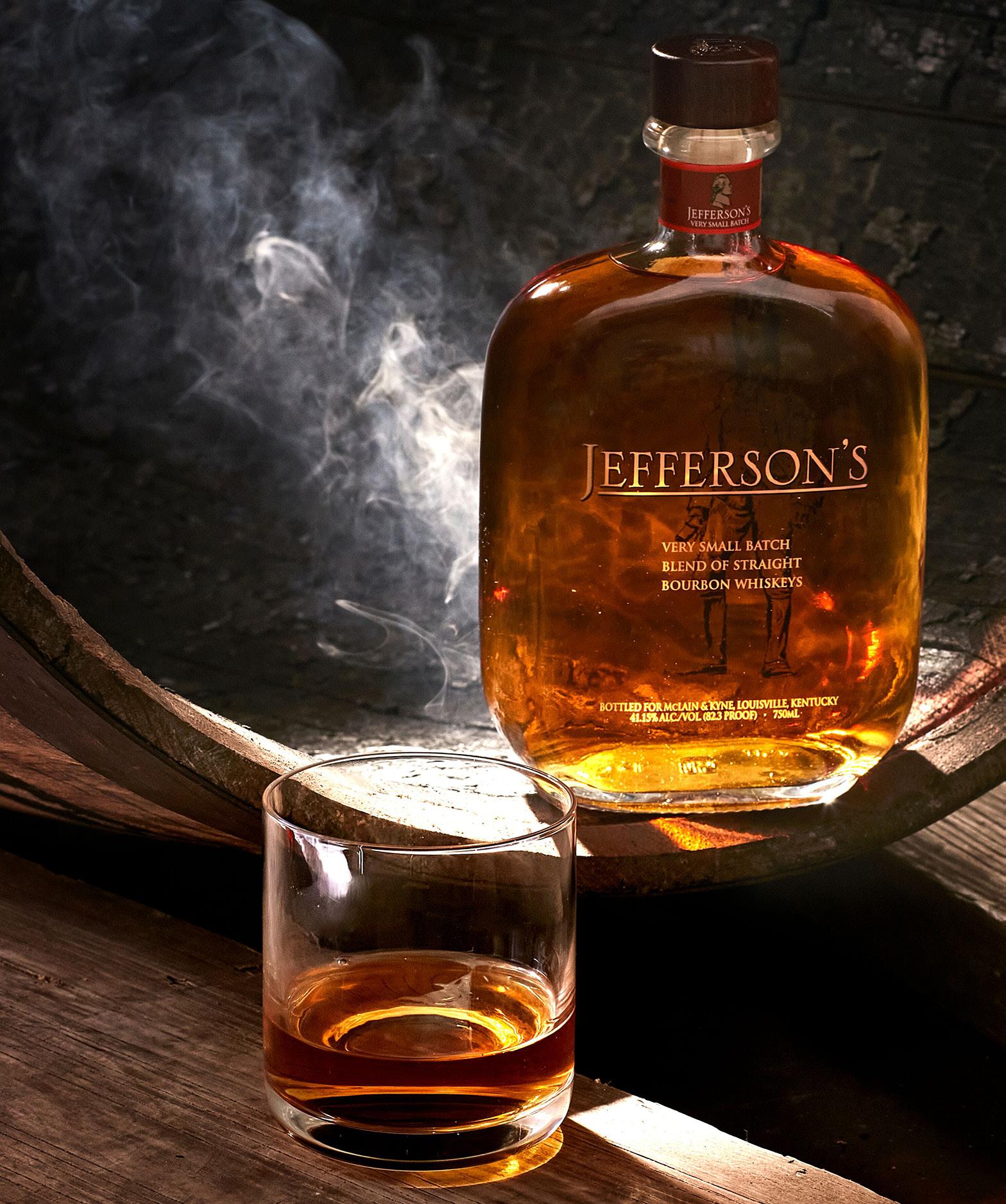
JB: We have loads of exciting plans to bring the Jefferson’s Ocean story to Australian consumers and to the trade, so watch this space! Different batches of Jefferson’s Ocean undertake different voyages, and every variation in the voyage – the climate, the conditions at sea – impact the flavour profile of the final bourbon. Voyages are logged, and batches are numbered, so there are lots of ways for consumers to discover the story behind their individual bourbon. The voyages take in all parts of the globe, including Australia, so this is really a unique production story that consumers all over the world can get involved in and feel a connection too. But beyond the amazing story, the key benefit is in the product itself – it’s the impact on the whiskey in the glass that matters. ■
Jefferson’s VSB is available now, with Jefferson’s Ocean reaching the Australian market in 2024. Rabbit Tale will launch in November of this year.
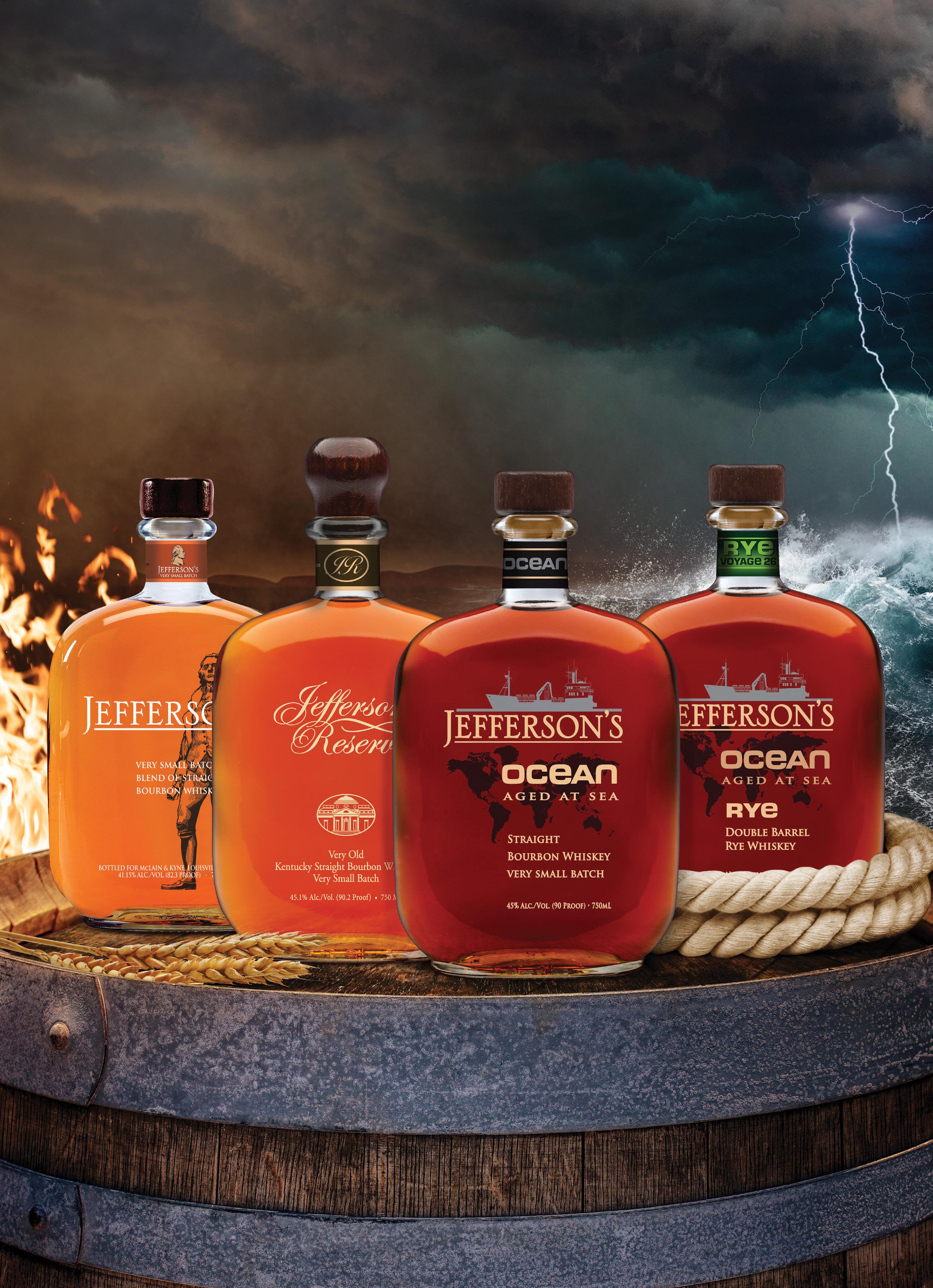
Liqueurs are one of the most colourful and diverse sectors, with something to offer a range of drinkers. Caoimhe Hanrahan-Lawrence gets the low down on the category.
Liqueurs represent a diverse and dynamic sector of the drinks industry, with a wide range of flavours appealing to a variety of palates. The liqueur sector both contains specialist brands, such as Mr Black coffee liqueur, as well as brands with a range of flavours. For the consumer, they offer an effortless way to recreate cocktails or put a unique twist on an old favourite. Tom Baker, founder of Mr Black, emphasised the ease of use of liqueurs.
“Liqueurs are the shortcut to great tasting drinks. After all, historically they’re a method of preserving flavour and freshness,” he said.
The vibrant colours of liqueurs give visual appeal, and attract consumers looking for simple drinks as well as skilled cocktail connoisseurs keen to craft their own recipes. For Marie Brizard brand manager Nick Harris, liqueurs have a multitude of uses.
“With a myriad of producers, styles, and flavour profiles, I’m of firm belief that the perfect liqueur range can both play a supporting role in the construction of classic cocktail recipes and lead as the hero spirit in modern cocktails or playful experiments,” Harris commented.
Flavour is one of the most obvious differentiators within the liqueur sector, with certain flavours experiencing a boost in popularity that buoys the category.
“Demand for liqueurs unsurprisingly follows bar and home cocktail trends, as such flavours like triple sec follows the margarita and coffee liqueur the espresso martini,” Harris said.
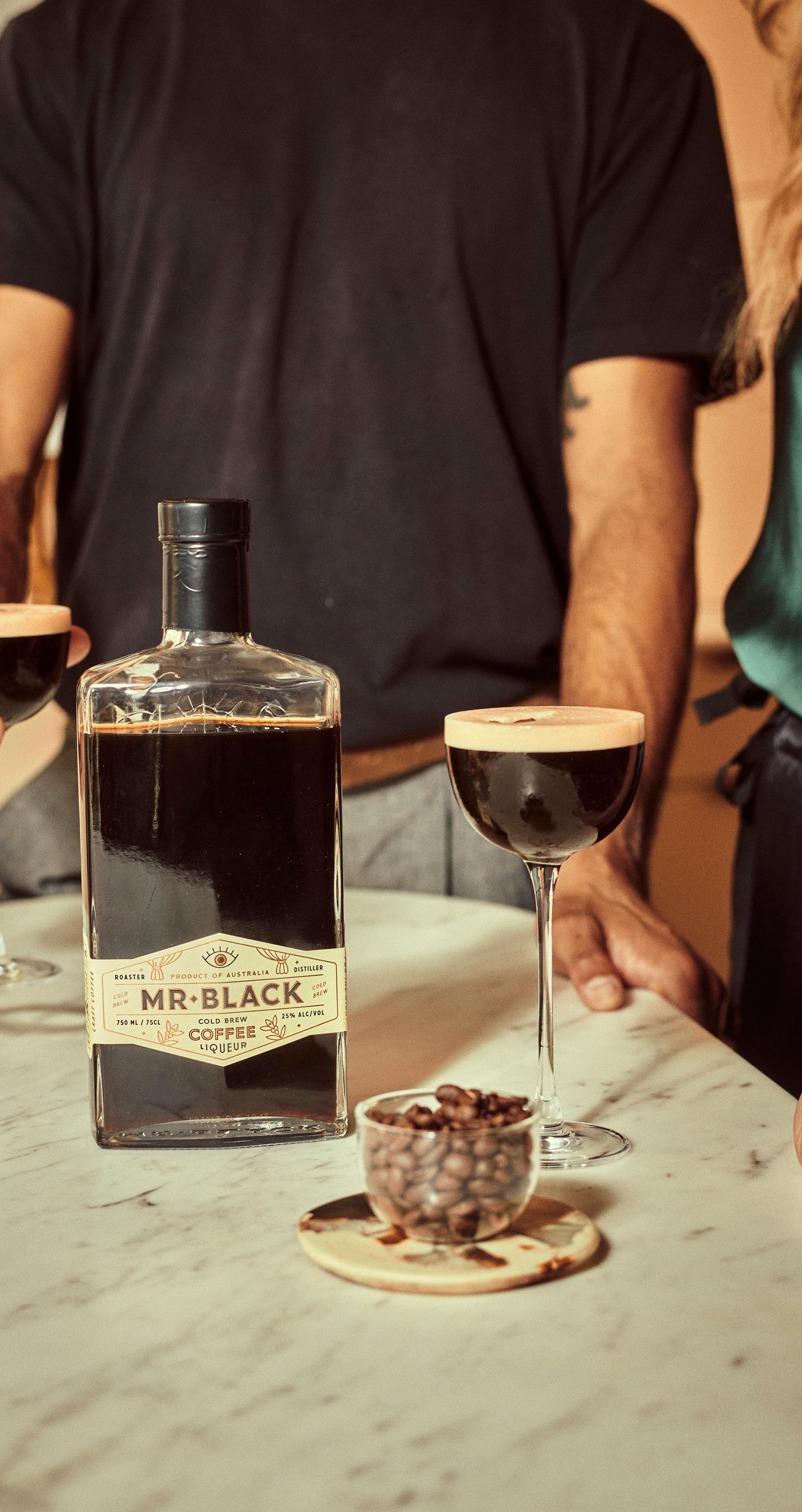
Harris has noticed a rise in the popularity of elderflower liqueurs due to its use in spritzes and low alcohol drinks. Lychee is another surprising trend, which Harris believes is influenced by trends in the food world. The culinary scene is no stranger to liqueurs either, with orange and nut liqueurs frequently appearing on baking shows and in dessert recipes.
“I think a lot of the trends are taken from food and cooking shows. The likes of Master Chef has had a huge impact on consumers’ understanding of exotic ingredients and an openness to experiment,” he said.
As the weather cools, fresh fruits are becoming harder to come by and more expensive, but liqueurs offer a means of replicating these flavours.
“Liqueurs have played an important role in the

evolution of cocktail culture, historically an efficient and stable way of introducing flavours of fruits, spices and other botanicals that may either be perishable, seasonal, or hard to manipulate,” Harris explained.
Though other beverage sectors see stark changes in sales during winter, Baker doesn’t see as much of a seasonal change in the liqueur and cocktail world.
“I love that Australian drinkers aren’t particularly seasonal like in many parts of the world. It’s not unusual to see people drinking espresso martinis in any weather - hot or cold,” he remarked.
Emily Prochazka, brand manager of De Kuyper and Cherry Heering suppliers William Grant & Sons agrees, saying that consumers haven’t yet given up the drinks that proved popular in the summer.
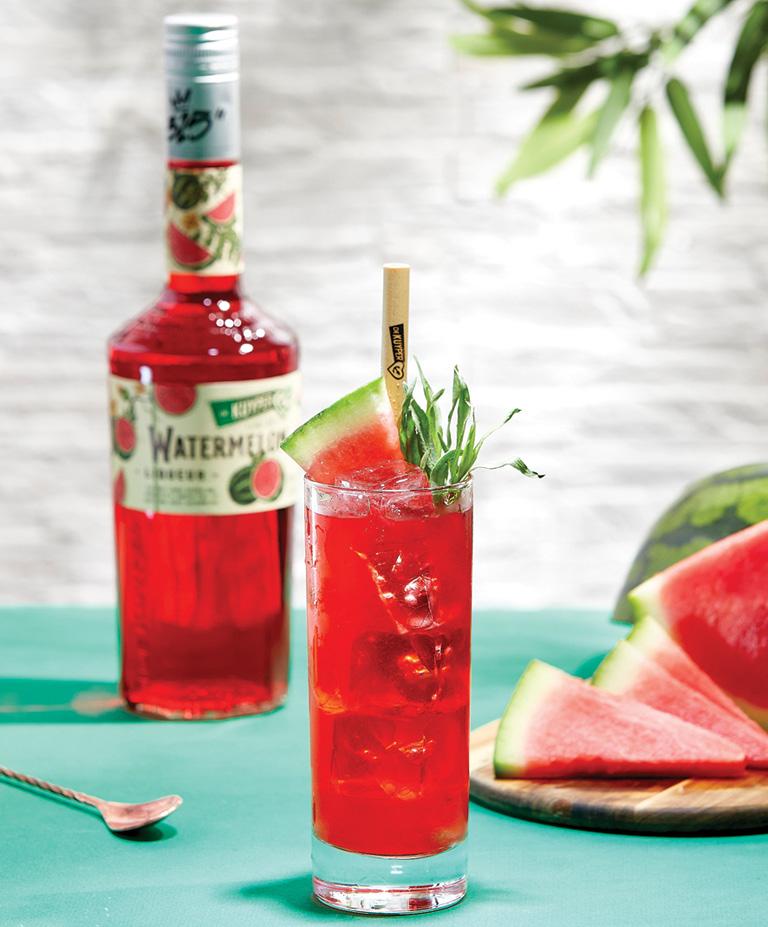
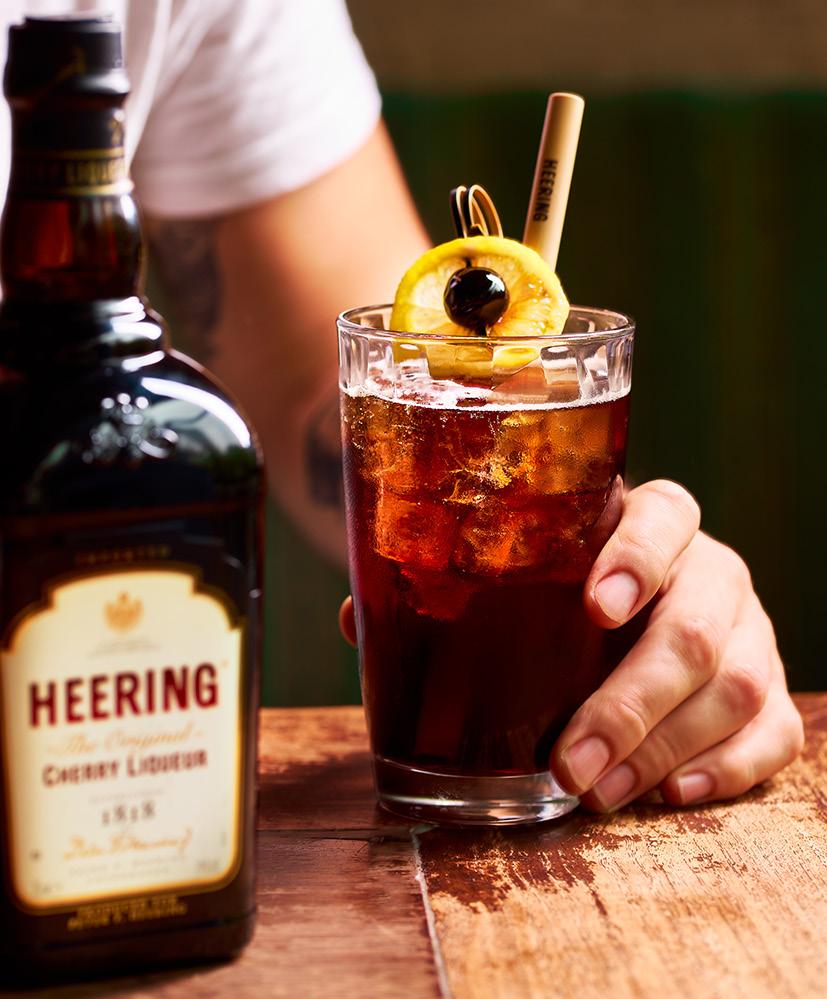
“Refreshing trends are still at the top with margaritas and passionfruit martinis trending over the warmer weather we just had over the last six months,” she said.

However, there are some flavours that prove particularly popular in the colder months, such as warming cinnamon or chilli, and citrus and stone fruit flavours which are common in wintery cocktails.
As with many other segments, oncoming economic pressures will likely affect
the liqueur category, and may result in consumers becoming more discerning and less ambitious with their purchases. That’s where retailers (and suppliers) need to communicate a product’s value proposition.
“Consumers continue to experiment and look for different options (and inspiration) across all quality segments, and with the recent cost of living pressures will come the need for retailers to show value in more ways. Shoppers will be looking for value in price as well as value outside of price; for example, quality in liquid, or added experiences,” Prochazka outlined.
As a nation of coffee fanatics, it’s no surprise that coffee liqueurs are popular in Australia as well.
“Aussies love their coffee - it’s a part of our national identity. It’s an obsession. High quality coffee liqueurs are really just an expression of that, but during cocktail hour. Outside of Bailey’s, I don’t think other categories of liqueurs have the same deep consumer obsession,” said Baker.
With coffee-flavoured cocktails seeing a spike in popularity, this is a great time for coffee liqueurs, according to Georgia Hawkes, assistant brand manager at Kahlua distributors Pernod Ricard.
“Coffee liqueur has always been a mainstay in Australian’s liquor cabinet, but we are seeing an increased demand as espresso martinis are really having a moment!” Hawkes commented.

The popularity of coffee flavouring doesn’t end with coffee liqueurs like Mr. Black and Kahlua, since 88 per cent of Australians enjoy coffee in some form, according to McCrindle.
“The coffee trend is no longer just confined to liqueurs, as coffee flavours are popping up in other categories such as rum and tequila,” Hawkes continued.
However, the popularity of coffee in Australia means that Aussies are highly discerning when it comes to their products. It is not enough for a liqueur to taste like coffee – it needs to taste like good coffee. For Baker, a search for quality supersedes the trend towards local drinks.
“I don’t think drinkers are looking for a high variety of liqueurs on their back barthey just want the best. That may be local, but why have three different coffee liqueurs? One makes the best cocktails - buy that one. Local will always have a strong appeal to Aussie shoppers , but I think drinkers are smart enough to know that Aussie doesn’t always mean high quality or the best,” Baker said.
Coupled with consumer concerns about sustainability in the liquor industry, the coffee industry has seen an increased interest in sustainable and ethical coffee production. The Mintel Global New Product database indicated that as of 2020, approximately half of all coffee brands have some kind of environmental or sustainable certification, almost double the numbers of ten years ago. At the meeting point of these two sections of the beverage industry, sustainability and ethical production is a definite concern for coffee liqueurs. Additionally, consumers are wary of false claims.
“Consumers don’t just take brands at face value and (rightly so) have high expectations when it comes to sustainability,” said Hawkes.
Liqueurs frequently star in cocktails, and chances are that a customer looking to recreate their favourite drinks will require at least one in their home bar. The ability to personalise a favourite drink is also a key appeal of liqueurs.
“With six of the top 10 cocktails in Australia containing a liqueur, the demand for liqueurs is huge – and that’s not even taking into account flavour variations when it comes to popular classic cocktails like the margarita and mojito,” Prochazka said.
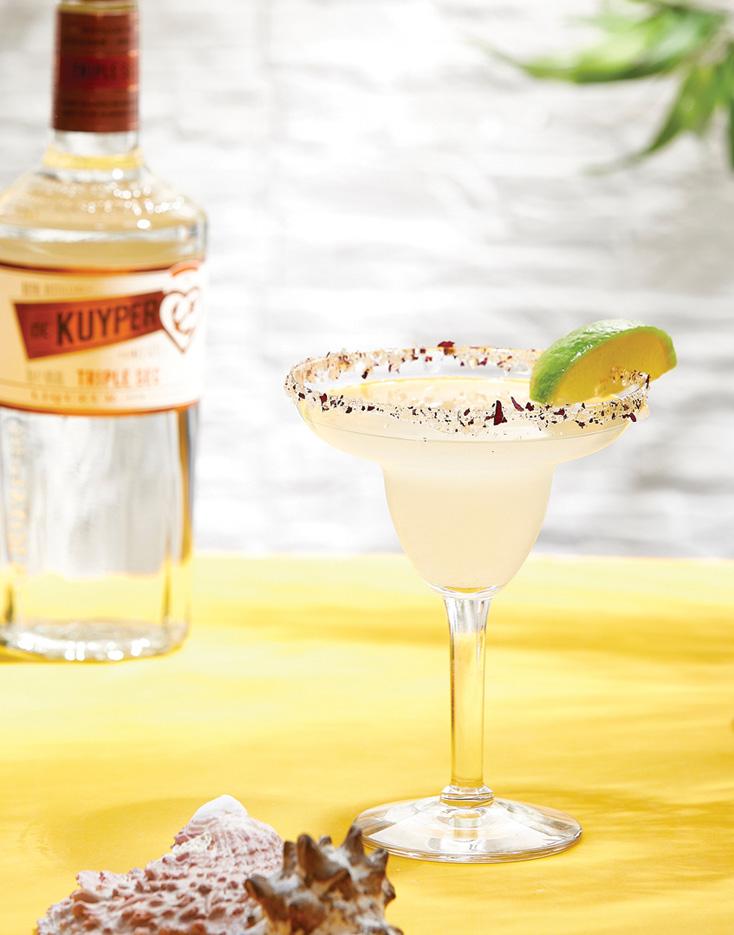
The broader cocktail trend and the rise of home bars during COVID lockdowns has had an undeniable effect on the liqueur sector.
“Consumers have a much broader understanding these days around what goes into their cocktails. This is driven in part by the fact that most of us were stuck at home during COVID with no bars open, leading us to learn how to make that favourite daiquiri that we used to drink in bars. It’s had a huge impact on not only the range of spirits and liqueurs consumers now have at home, but also their understanding of many classic cocktails,” Harris explained.
Even so, cocktail education still has a way to go, especially with an ever-growing range of available liqueur varieties.
“We saw consumers become more familiar with liqueurs during lockdown as the ‘home-premise’ trend grew and more and more consumers were learning how to make cocktails at home. However, there is still an education job to be done with consumers to help uncomplicate cocktails,” Prochazka commented.


For Hawkes, social media plays an important role in promoting the category through cocktail recipes and tips, especially among young adults.
“Liqueurs are still important as they allow consumers to be more personalised and creative when it comes to mixology. Cocktails are full of theatre and are incredibly visual and, as we’ve seen on Tik Tok, encourage some amazing experimentation and trends,” she described.

Another beneficiary of the cocktail trend has been RTDs and pre-batched cocktails. However, it does not seem that prebatched cocktails will overshadow liqueurs, especially with the rising cost of living.
“While there is certainly increased demand for pre-batched cocktails which are receiving increased shelf space, these are still regarded by many as a luxury purchase so I think the need for both [liqueurs and pre-batched cocktails] is still very much required,” Harris argued.
Prochazka agreed with this, citing a recent CGA report that indicated that consumers generally prefer traditional cocktails as opposed to pre-batched options, a preference that is even more pronounced among older consumers.
With such a wide range of uses and broad appeal, liqueurs remain in demand. With consumer education initiatives and an awareness of trends within the sector, liqueurs can prove an integral part of a retail strategy. ■

Jono Outred, WA
Based in Margaret River, Jono is a beer writer that predominantly covers the South West of WA. He’s been involved in the state’s beer industry in various capacities since 2011.
David Ward, ACT
After 15 years in the craft beer world, David is now working for Gravity Seltzer. However, you can often still find him in a front bar enjoying a craft beer or three.
Tina Panoutsos, VIC
One of Australia’s leading beer judges, Tina is a beer sensory expert with over 30 years’ experience in the brewing industry in roles across technical and commercial functions.

Tiffany Waldron, VIC
A Certified Cicerone®, National Beer Brands Manager for Beer Fans and Pink Boots Australia President, Tiffany is focused on making changes in the world of beer through education and furthering beer culture beyond standard boundaries.
Josh Quantrill, NSW
Josh is a Certified Cicerone® currently working at 4 Pines Brewing who has extensive experience in the beer industry in the UK and Australia.


Ian Kingham, NSW
That Beer Bloke, Ian’s decorated beer career has included judging at Australia’s best competitions while he’s currently the Sydney Royal’s Chair of Judges.

Winter-specific imbibing is fit for myriad styles that reflect not just a generally mild Australian climate but the changing craft landscape and the tastes of the consumers that help shape it. So in this Beer & Brewer Winter tasting, the team has tried a huge range of beer categories, from stouts to sours and beyond.
Michael Capaldo, NSW
National sales rep at Hop Products Australia, Michael is a qualified and experienced brewer and an accomplished beer judge (GABS, World Beer Cup, Indies, AIBA etc).

Jamie Webb-Smith, NSW
Previously a brewer at The Australian Brewery, Jamie is currently head brewer at Yulli’s Brews in Sydney. He’s a home brewer turned pro, who completed the NSW TAFE microbrewing course.
Benji Bowman, NSW
With six years of industry experience in Australian craft beer and cider, Benji is now the state sales manager at Local Drinks Collective, working to increase the footprint and awareness of independent liquor in Australia.
Jake Brandish, WA
Beer & Brewer’s HomeBrewer Editor, Jake has a post-grad Dip in Brewing, is a BJCP judge, has brewed commercially and is an all round beer geek.
Mark Dowell, ACT
A beer broker for BentSpoke with a background in liquor retail, Mark is always trying new beers while appreciating the classics that brought us here.
Craig Butcher, SA
Based in the Barossa Valley, Craig has 20-plus years’ experience in the liquor industry including winery cellarhand, tastings and sales, newbie homebrewer and beermad bottleshop guy.
Liam Pereira, NSW
Liam is the group venue manager for Sydney’s Batch Brewing Co.

A Certified Cicerone® and BJCP judge, he was previously general manager of Sydney Beer Week.






Alice Lynch, WA
A Perth-based sales rep for Beerfarm, Alice’s start in the craft beer world came by slinging pints at Two Birds in Melbourne. She’s here to force an end to random men being shocked that women love beer.
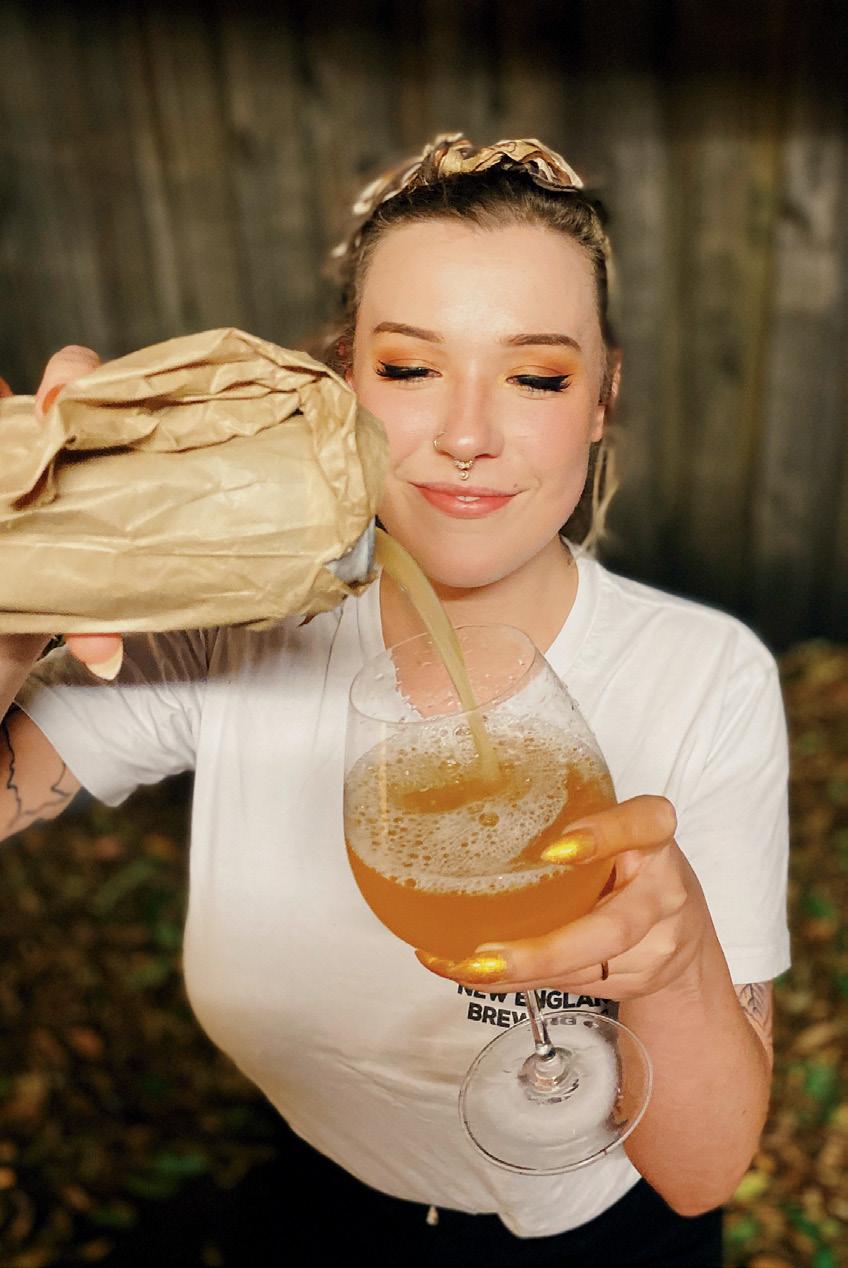
Briony Liebich, SA

A Certified Cicerone® focused on helping people boost their tasting skills, Briony led the sensory program at West End Brewery for 10 years and judges at national beer and cider awards.


Lindsay Astarita, VIC Certified Cicerone®, beer judge and the Sensory & Quality Coordinator at Stomping Ground, Lindsay is passionate about beer education and all things quality.

Scott Hargrave, NSW/QLD
Scott is Balter Brewing’s multiaward winning head brewer and a regular on some of Australia’s and the world’s most prestigious judging panels including the Great American Beer Festival and the World Beer Cup

Not all submissions to our tasting panel are featured in the following pages. This could be because of space restrictions, that we already reviewed it in the recent past or the product did not meet our panel’s requirements. We’re not in the business of running any one down, and if there is a chance to speak with a brewery about issues that may have arisen during a tasting, then we will endeavour to pass that information on in the interest of transparency.


ABV: 10.0%
Style: Imperial Stout


In a word: decadent. From the deep brown colour, to the thick tan head –decadent. From the huge peanut butter aroma to the more subtle sniffs of milk chocolate, caramel and dark biscuity malt –decadent. From the rich mouthfeel to the flavours of peanut butter, chocolate, salt and raisin – decadent. Finishing with ever so slight boozy warmth and you have pure decadence.
Food: Hearty beef stew deedsbrewing.com.au
ABV: 6.5%
Style: Oatmeal Stout
A fantastic beer that pours an inky black with a dense tan foam with aromas of milk chocolate and sweet nuts. Considering its ABV, it drinks easy and smooth with flavours of chocolate, both milk and dark, up front that all slide into toasty coffee that lingers. Overall, it’s well balanced, flavourful and gets even better as it warms up.
Food: Warm Nutella cookies foxhatbrewing.com.au
ABV: 12.0% Style: Belgian Christmas Ale
A deep amber red with light foam, the aromas allow festive memories to flood in as fresh from the oven mince tart notes of plump raisin, sweet dark plum, light caramel, Dutch cinnamon and vanilla bean abound. This all transitions to the palate with an enveloping warmth that lingers softly while wrapping the complexity of this beer like a warm blanket. Well balanced and integrated flavours round out the long finish.
Food: Toffee slowlanebrewing.com.au
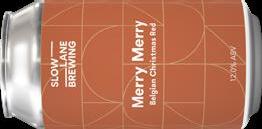
Chimney

ABV: 4.0%
Style: Lichtenhainer
Delivering great balance of body, carbonation, smoke and acidity, this classic German top-fermenting style is light bright yellow with moderate haze. Eliciting delicate smoke notes, the oak and vanilla are balanced by a lactic sour character while pleasant stone fruit notes are evident. Smoke and balanced lactic acid acidity meld with nice bready characters on the palate before finishing dry and crisp.
Food: Oysters slowlanebrewing.com.au

ABV: 5.3%
Style: American Brown Ale
A great example of the style, it’s dark brown with a slight red hue and a rich tan head. Orange and grapefruit hop aroma is followed by rich malt notes of light roast coffee, rich caramel and toasted nuts. Big chewy and roasty malts dominate the palate with notes of toasted nuts, dark chocolate and roasted coffee followed by citrusy hop flavours and a balanced bitterness.
Food: Goulash bigshed.beer
ABV: 6.0%
Style: Hazy IPA
Pale straw and hazy with fine, persistent foam, it brings soft sweet stone fruit aromas with touches of pineapple, vanilla and coconut. Pineapple, pine, resin and light stone fruit flavours hold centre stage with hints of lemon and lime and a little hop-based sulphur for some herb and floral. Soft and full in mouthfeel with clean, wellconstructed bitterness and a soft dry finish.
Food: Tapas hopnation.com.au
ABV: 5.0%
Style: Hazy Pale Ale
Delivering all the requisite hallmarks, this pours light yellow and hazy with aromas of sharp citrus peel and soft mango. The soft tropical fruit flavours drip onto the palate where things are balanced, fluffy and not at all overpowering. It’s subtle and thirst quenching with just enough bitterness on the finish to bring you back for another satisfying sip.
Food: Cheese & spinach borek dadndavesbrewing.com
ABV: 4.8%
Kruze
Style: Hazy Pale Ale
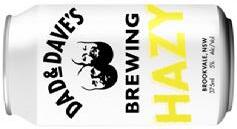
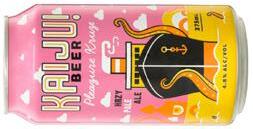
Aromas pop right out of the glass, consuming the olfactory senses with lime, guava, orange and so much more! The colour is pale and the head is thick and popping with micro aroma explosions. The flavour is complex, displaying citrus, dank, passionfruit and pine needles. This Pleasure Kruze is a true dream boat of a beer!
Food: Pulled pork burger kaijubeer.com.au
ABV: 4.9%
Style: Lager
IronBark Hill’s beers have been consistently gaining traction as delicious fridge filler staples and this is no exception. A clean, light golden, almost-straw like appearance and sweet aromas that are all zesty citrus, lure you in for your first sip. Flavours of a biscuity malt base create a slightly sweet back-end that enhances drinkability. The light body and high carbonation help this lager become an excellent Sunday session option.
Food: Fisherman’s basket ironbarkhill.beer
ABV: 4.2%
Style: Cola Sour
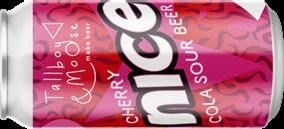
This is a creative take on a cola soda and pours a deep burnt orange with low clarity. Big aromas of coke bottle lollies, ripe cherries and chocolatey cacao usher in flavours of cinnamon, a slight kiss of cherry and a nice lactic sourness to finish. A mouthfeel of a spritzy, lingering effervescence create a cola sour beer that any cola drinker would appreciate.
Food: Vanilla ice cream float tallboyandmoose.com
This month our panel explored the wonderful world of red blends, selecting their standout wines from across three price brackets.
➤ Andrew Graham, Journalist, Australian Wine Review
➤ Andy Young, Associate Publisher, The Shout and Bars and Clubs
➤ Brydie Allen, Editor, National Liquor News
➤ David Fahey, Wine Consultant
➤ Ed Peake, Key Account Manager, Penfolds
➤ Geoff Bollom, Wine Specialist, Porters – Glebe and Balmain East

➤ Helena Edgerton, Wine Educator, Sydney Wine Academy
➤ Kasia Sobiesiak, Wine Educator and Writer
➤ Nigel Burton, CEO, Burton Premium Wines

Yalumba FDR1A Cabernet

Sauvignon Shiraz
Region: Eden Valley
VIN: 2016 LUC: $34.62
Distributed by: Samuel Smith & Son
“A rich dark red wine with elegant red, black and blue berry fruit and oak characters. A full mouthfeel of fruit finished with balanced tannins.”
– David Fahey
Region: Coonawarra
VIN: 2018 LUC: $18.21
Distributed by: Westwood Wine Agencies (VIC), Porter and Co (SA), Bacchus Wine Merchants (NSW/ACT), The Wine Tradition (QLD), Claret & Co (WA), David Johnstone & Associates (TAS)

“Well made wine that punches above its price point. Ripe tannins, good structure, with palate of blackberry bramble, earth and cedar. Persistent length.” – Helena Edgerton

Region: Great Southern




VIN: 2018 LUC: $12.90
Distributed by: Single Vineyard Sellers
“Complex, fruit driven and balanced. This is a great wine for this price point, with dark cherries, vanilla and oak on the nose. Firm tannins and a good amount of acid.”
– Geoff Bollom Zema Estate Cluny Cabernet Merlot Harewood Estate Cabernet MerlotYalumba The Signature Cabernet
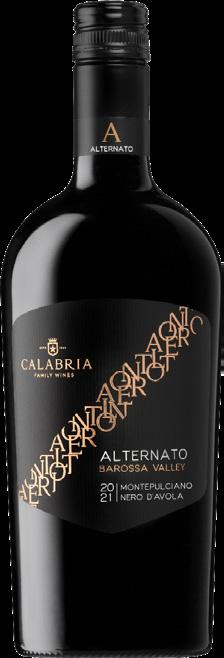

Sauvignon Shiraz
Region: Barossa
VIN: 2019 LUC: $47.13
Distributed by: Samuel Smith & Son
“A clear standout to me. Soft but rich on the nose, with hits of spice and savouriness. SP: Lavender and red berry fruit on the palate with well-integrated oak and a balanced finish.”
– Ed PeakePainted Wolf Pictus
VII Grenache

Syrah Carignan
Region: South Africa
VIN: 2017 LUC: $38.70
Distributed by: Star Beverages
“There’s a powerful elegance to this full-bodied wine that has spice, pepper and oak as well as red berry and savoury aromas. It’s beautifully made with a generous rich mouthfeel and a long, elegant finish.” – Andy Young
Montepulciano Nero
D’Avola
Region: Barossa
VIN: 2021 LUC: $27.95
Distributed by: Calabria
Family Wine Group
“Purple in colour, this wine has some oak complexity. Rich palate shows spice and white pepper notes.” – Nigel Burton
Haan Estate
Wilhelmus Red Wine
Region: Barossa
VIN: 2020 LUC: $36.00
Distributed by: Haan Estate
“A big wine with huge tannins and great length. Powerful blend with a big wall of spearmint and well balanced finish.” – Andrew Graham
“Whilst some wines were big and powerful with full bodies and high tannins, others were more medium bodied and focused on fruit expression, while having good structure. The power of blends!”
Ferngrove Queen of Sheba Cabernet


Sauvignon Shiraz
Region: Great Southern

VIN: 2021 LUC: $24.24
Distributed by: Ferngrove Wines

“Elegant wines with black plums, gentle spice, nutmeg, velvety tannins, and a layered, black coffee finish. Smooth and easy to drink.” - Kasia Sobiesiak
Helena Edgerton Wine Educator Sydney Wine Academy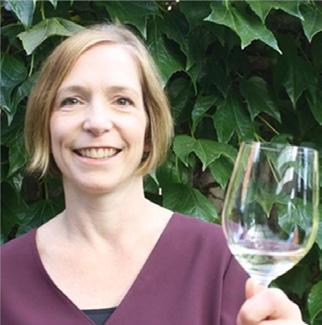
➤ “Charcuterie, tapas, or a rich cassoulet.” – Ed Peake
Brown Brothers
Shiraz Mondeuse
Cabernet Sauvignon
Region: King Valley
VIN: 2015 LUC: $54.83
Distributed by: Brown Family Wine Group

“Notes of nutmeg and black cherry. Elegant, structured and balanced wine that does everything just right. Extremely drinkable.” – Geoff Bollom
➤ “Big tannin wines need food, especially something meaty with lamb or beef.” – Nigel Burton




➤ “For the more expressive reds, a good pairing is lamb rack. At the more affordable end it’s sausages with tomato salsa.” – Andrew Graham
➤ “Some of the softer reds could go with Italian pizza, pasta or pork.”
– David Fahey
➤ Nemorino IGT Costa Toscana Red Wine 2020, Tuscany, LUC $32.25 (Single Vineyard Sellers)
➤ Devil’s Corner Mt Dove Pinot Syrah 2020, Tasmania, LUC $47.30 (Brown Family Wine Group)




➤ Thorn-Clarke Shotfire Quartage Red Blend 2020, Barossa, LUC $18.42 (Mezzanine)
➤ Marrenon Envie de Nature Luberon 2019, France, LUC $13.55 (Star Beverages)
Patch Wines

Shed Red
Region: Yarra Valley
VIN: 2022 LUC: $18.92
Distributed by: Déjà Vu Wine Co.
“A cracking red that is very approachable. Herbal spice helps elevate the black cherry and raspberry flavours. A mediumto-full body supported with soft tannins.” – Andy Young
Haan Estate Shiraz Viognier

Region: Barossa
VIN: 2018 LUC: $15.40
Distributed by: Haan Estate
“A well balanced wine showing fine red and black berries with a touch of citrus. Elegant mouth feel and soft tannin finish.” – David Fahey
In Praise Of Shadows Lusco Fusco Touriga
Graciano
Region: McLaren Vale
VIN: 2019 LUC: $18.81
Distributed by: Déjà Vu Wine Co.
“Lighter red wine showing cinnamon, brambles and red berry notes, with a soft tannin finish.” – David Fahey
Yalumba Samuel’s Collection Barossa Shiraz Cabernet Sauvignon

Region: Barossa
VIN: 2019 LUC: $16.13
Distributed by: Samuel Smith & Son
“Clean, fruit driven nose. Rich full fruit palate, showing some oak and complexity. Good length.” – Nigel Burton
Peter Lehmann The Bond GSM
Region: Barossa
VIN: 2022 LUC: $15.05
Distributed by: Casella Family Brands






“Forest fruits on nose. Lots of tannins but balanced with a soft fruit palate. Great food wine.” – Geoff Bollom
Mt Bera Amphitheatre Shiraz Blaufrankisch
Region: Adelaide Hills
VIN: 2019 LUC: $17.20
Distributed by: Single Vineyard Sellers
“Ripe red cherries and strawberries, liquorice, and plush ripe tannins on the palate. Well made wine with balanced, lingering fruit on finish and some complexity.”
– Helena Edgerton
“Some good fruit intensity, but some wines showed overt tannins for this intensity.”
Kasia Sobiesiak Wine Educator and Writer
John Gehrig Gooramadda
Growler
Region: Victoria
VIN: NV LUC: $14.19
Distributed by:
John Gehrig Wines
“Looks and smells serious, with big intensity on the palate and notes of blackcurrant, blackberry and cherry and an Earl Grey tea finish. Decent length. This overdelivers for the price point.” – Kasia Sobiesiak
Millbrook Estate
Grenache Shiraz

Mourvedre
Region: Western Australia
VIN: 2022 LUC: $13.00
Distributed by: Fogarty Wine Group
“Vibrant colour draws you in, with red berries and pepper on the nose drawing you in even more. Medium-bodied wine fruit flavours with enjoyable spice on the palate and finish.”
– Andy YoungYellow Tail Jammy Red Roo

Region: Australia
VIN: NV LUC: $6.88
Distributed by:
Casella Family Brands
“Red and blue berries leading to a soft palate with integrated oak. Well balanced overall, with some sweetness.” – David Fahey
Marty’s Block Cabernet Shiraz


Region: South Australia
VIN: 2021 LUC: $9.68
Distributed by: Samuel Smith & Son
“Clean, bright red colour. Capsicum notes evident on the nose and palate, with mid length to the finish.”
– Nigel Burton“The lower price points had some outstanding wines with great value for money. Some of the younger wines suffered from herbaceaous young Cab issues.”
Dee Vine Two Monkeys Cabernet Merlot

Region: Australia
VIN: 2021 LUC: $4.00
Distributed by: Dee Vine Estate
“Herbaceous nose, with a fruit driven palate. Simple but good and fresh, excellent value wine.”
– Nigel BurtonOxford Landing

Cabernet Sauvignon Shiraz
Region: South Australia
VIN: 2021 LUC: $8.17
Distributed by:






Samuel Smith & Son
“This is one of those wines that will always be an easy choice when you just want a wine to enjoy and not have to think about too deeply. Good fruit, with savoury notes and pepper to finish. Solid.” – Andy Young
“The middle price point was balanced with red, black and blue berry notes and integrated oak. In the higher price point, wines had even more elegant fruit with balanced tannins.”
David Fahey
 Consultant
Wine
Geoff Bollom Wine Specialist Porters – Glebe and Balmain East
Consultant
Wine
Geoff Bollom Wine Specialist Porters – Glebe and Balmain East
In recent times, Australians have shown a remarkable return to physical stores, signifying a deceleration in the extraordinary growth of online retail sales.
However, online spending still reached an all-time high of $63.8 billion, accounting for 18.1 per cent of total retail sales according to the Australia Post E-commerce Report 2023.
Stephen Wilson Category & Insights Manager Strikeforce
These figures highlight the changing landscape of consumer behaviour. To gain deeper insights, Strikeforce conducted a survey focusing on online shopping for food and beverage services, analysing respondents’ purchasing patterns and preferences.
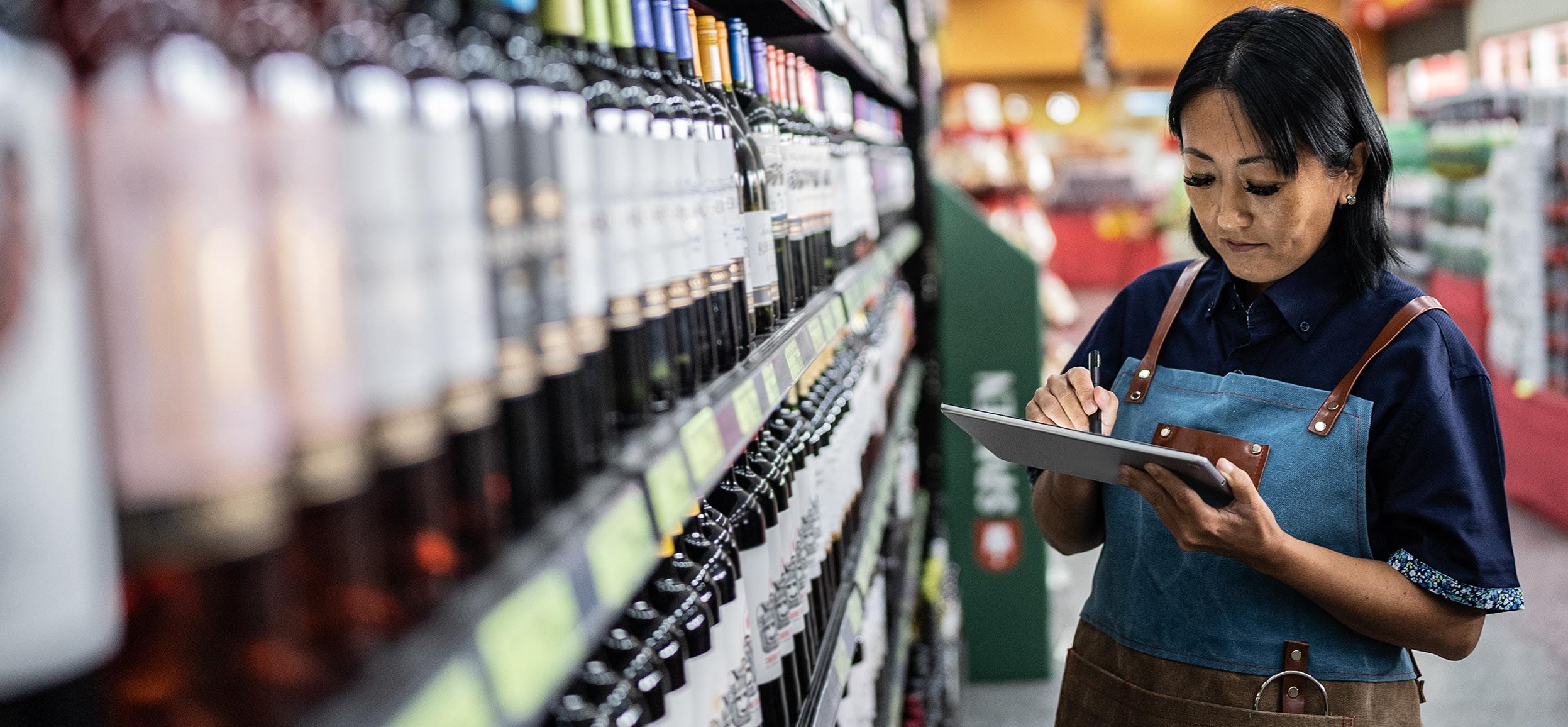
The most popular frequency was once a week, suggesting that many of these purchases were planned rather than impulsive. It is also important to note that 27 per cent of respondents did not use online food and beverage services at all in the past year, indicating significant growth potential for online retailers in this sector.
Strikeforce delved further into changes in respondents’ online purchasing habits in 2023 compared to the previous year.
Two out of three respondents reported using online food and beverage services as frequently as they did a year ago. However, approximately one in three respondents indicated a decrease in frequency. This reduction can be attributed to shoppers who, after being compelled to use online services during lockdowns, have now reverted to shopping at physical stores.
When asked about the primary reasons for their increased usage of online food and beverage services, respondents overwhelmingly cited convenience and time-saving benefits. The ability to shop from the comfort of their homes and flexible delivery options were key drivers.
For those who reported decreased usage, increased prices or fees emerged as the primary factor, followed closely by improved access to physical stores.
Regarding overall satisfaction with online food and beverage services, most respondents expressed a neutral or satisfied sentiment. This indicates that the current offerings are meeting consumers’ expectations. However, it also serves as a reminder to retailers that continued efforts are required to maintain satisfaction levels and entice shoppers to continue ordering online.
While Australians have shown a strong return to physical stores, online retail continues to thrive, achieving record-breaking sales. The survey conducted by Strikeforce sheds light on the frequency and usage of online food and beverage services, as well as the factors influencing consumers’ decisions. Convenience and time-saving benefits were paramount for increased usage, while higher prices and improved access to physical stores contributed to decreased usage.
Overall, satisfaction levels were generally positive, signalling that retailers must remain committed to meeting consumer demands to retain their loyalty in the online marketplace. ■
AVAILABLE AUGUST AVAILABLE AUGUST AVAILABLE AUGUST AVAILABLE AUGUST
CONTACT YOUR SAMUEL SMITH & SON REPRESENTATIVE TO ORDER
